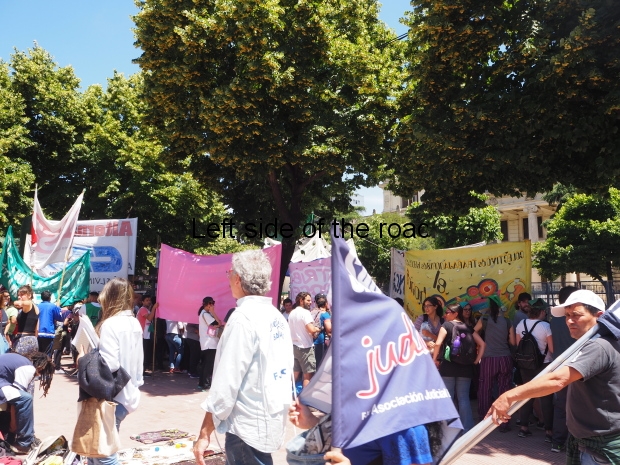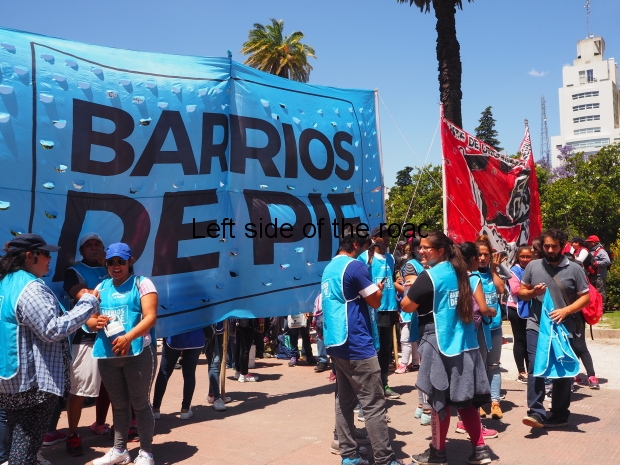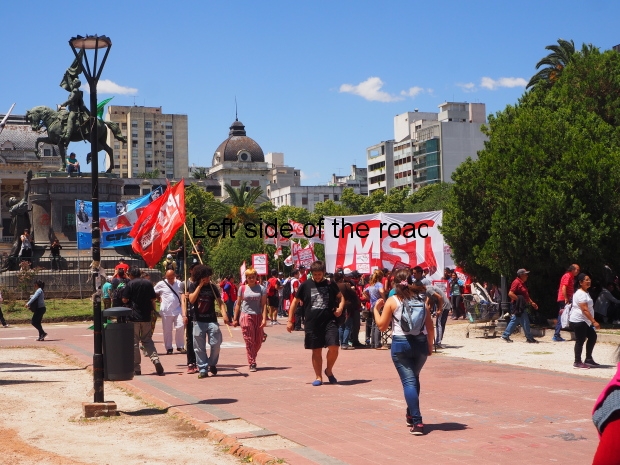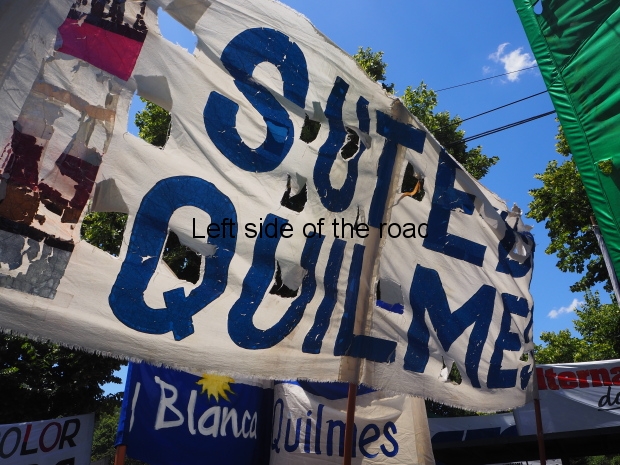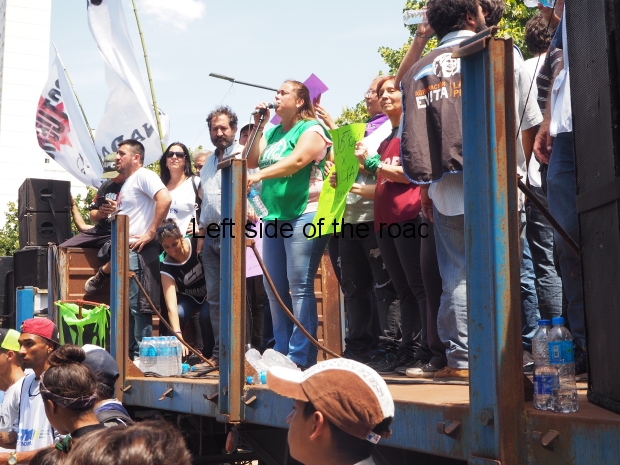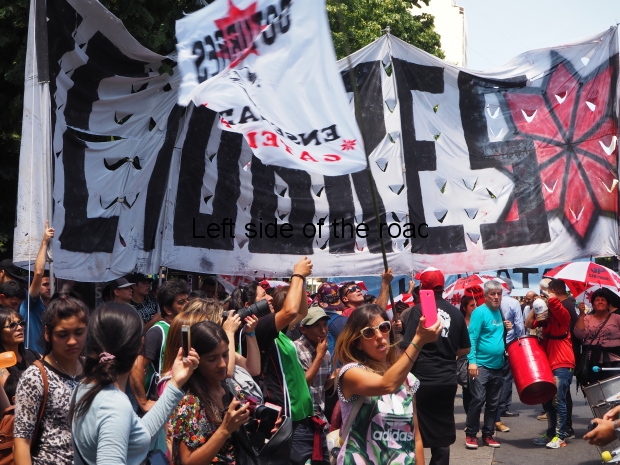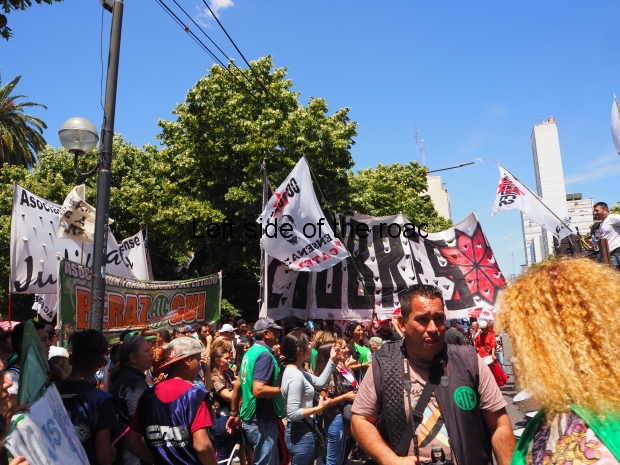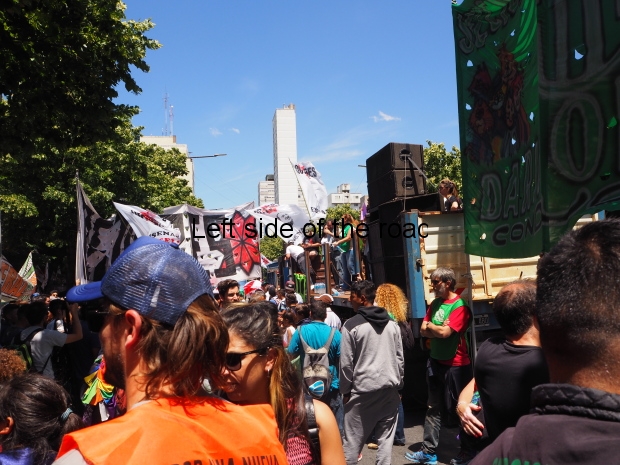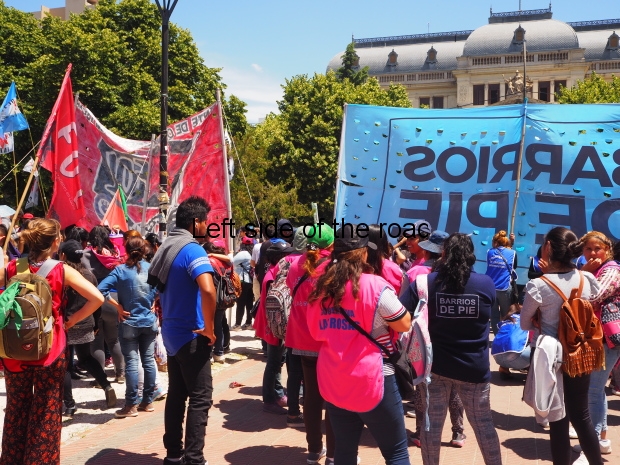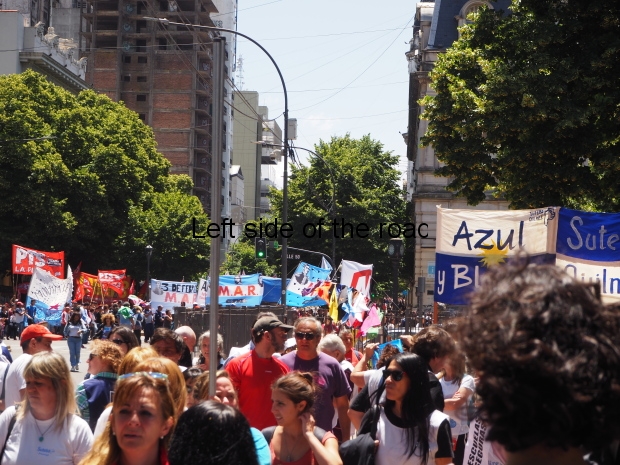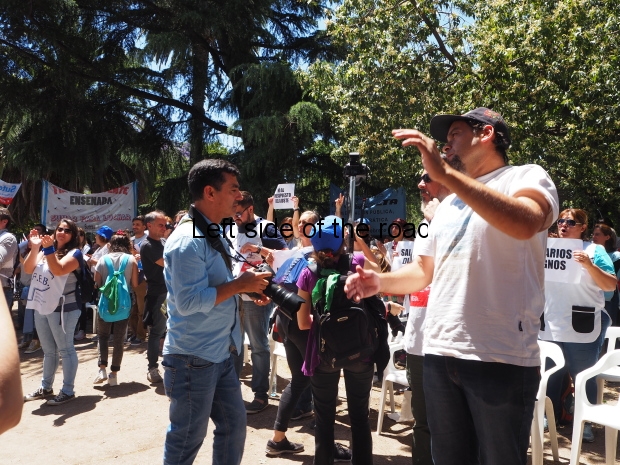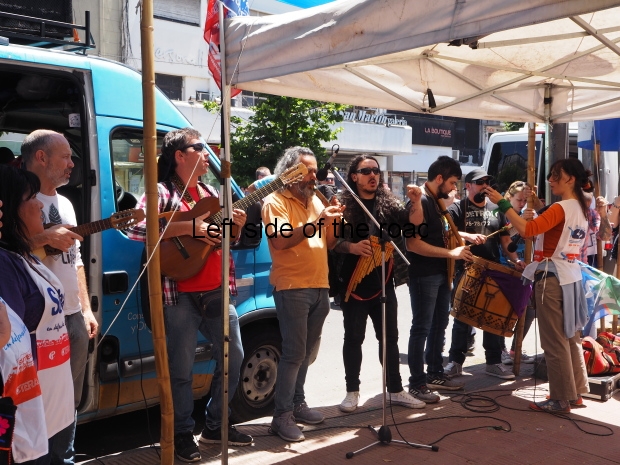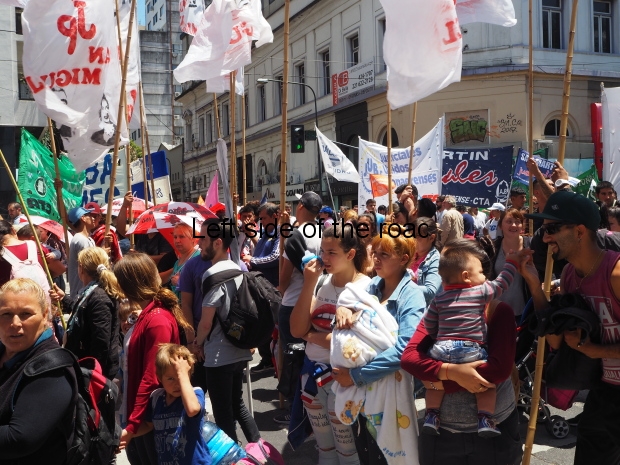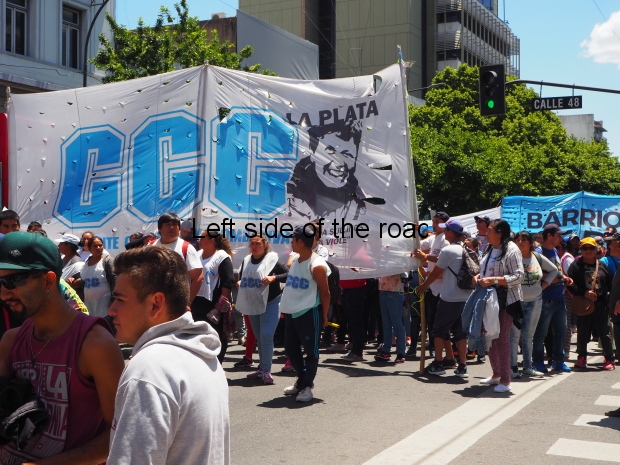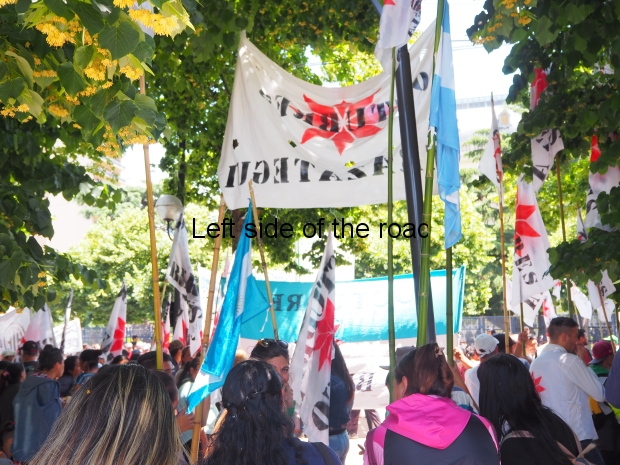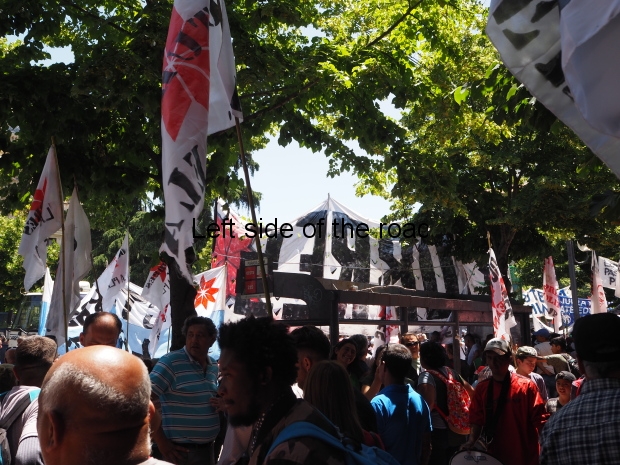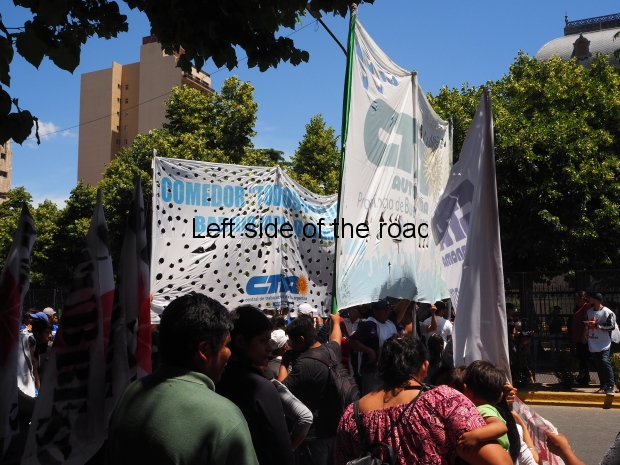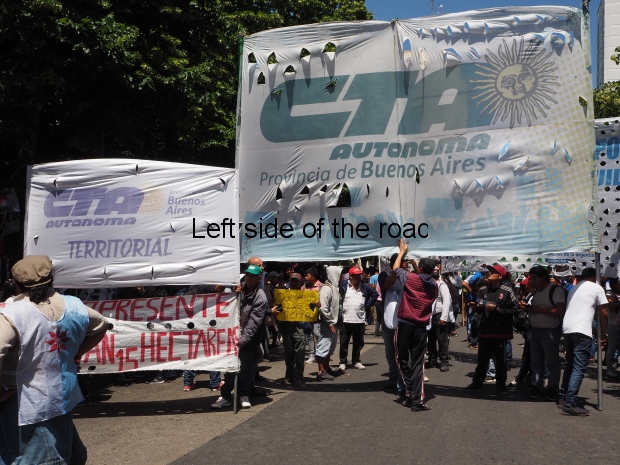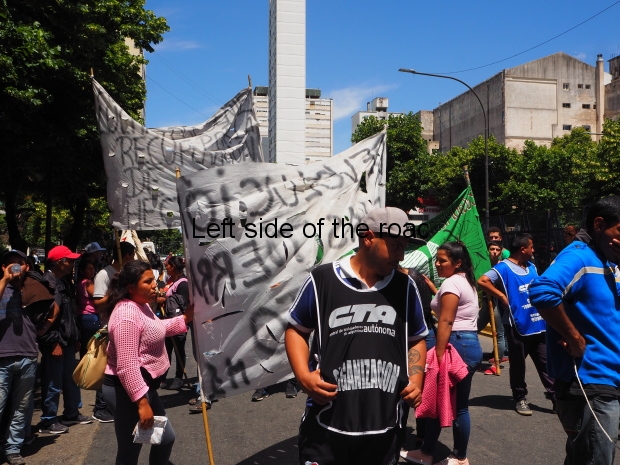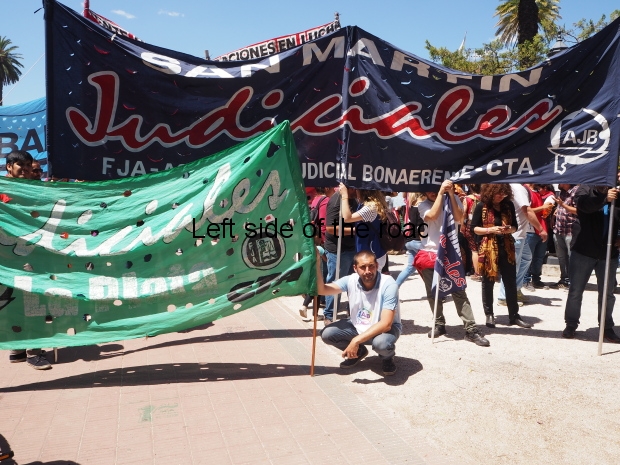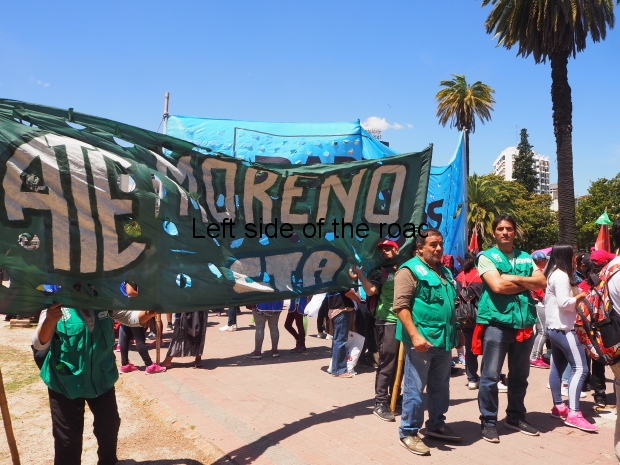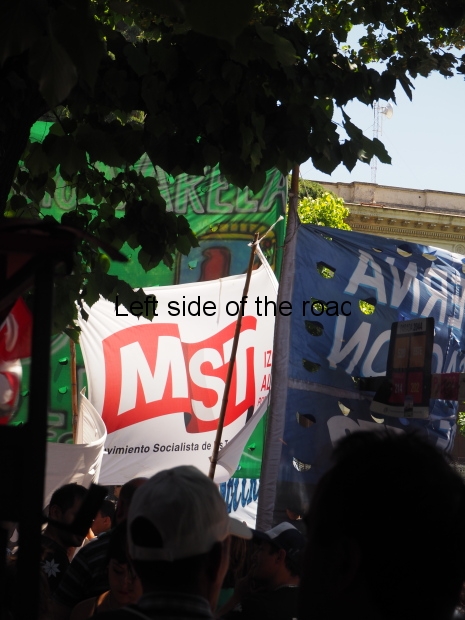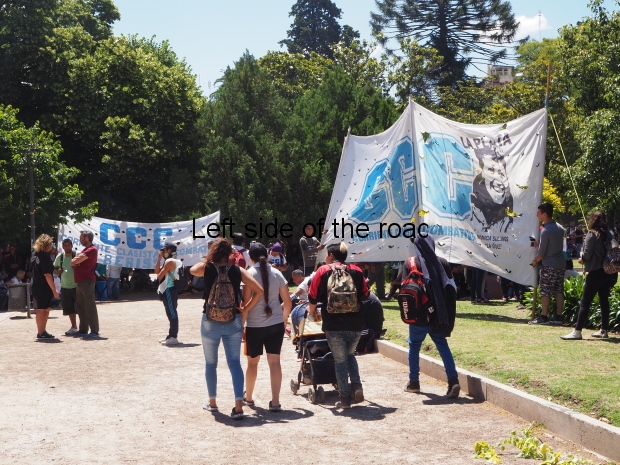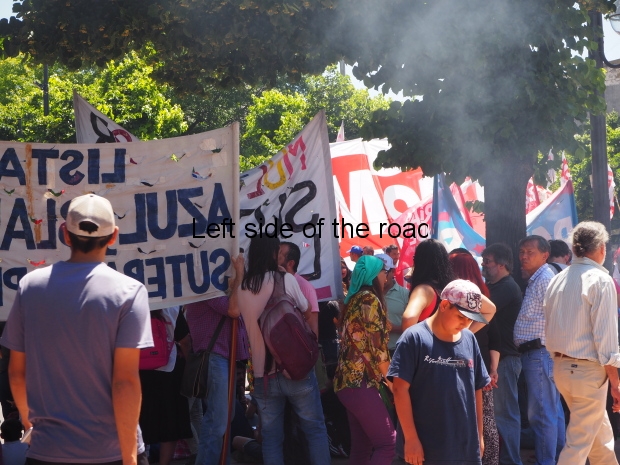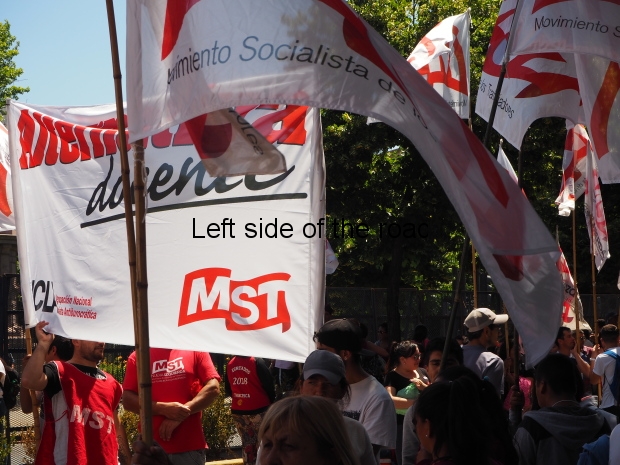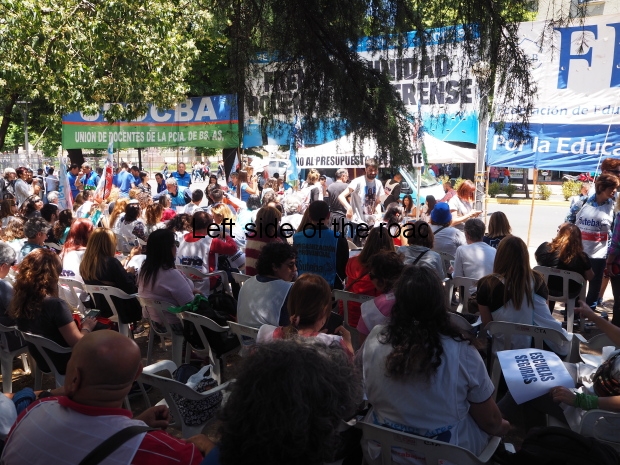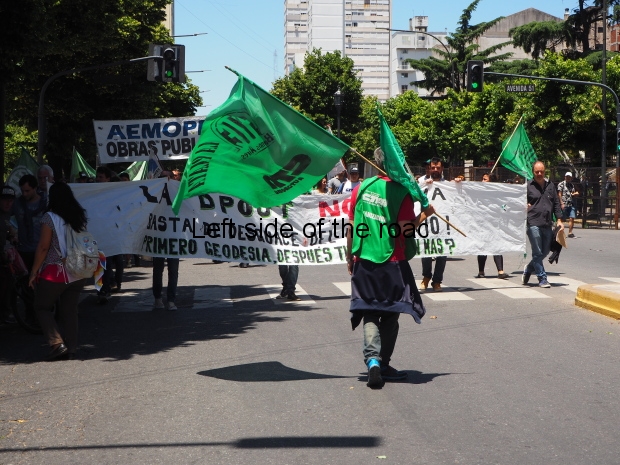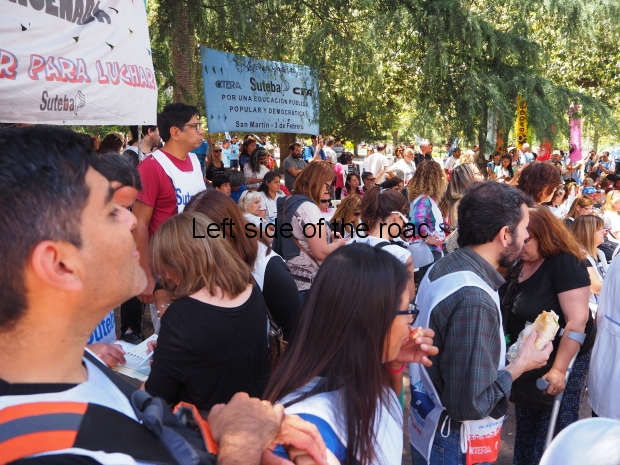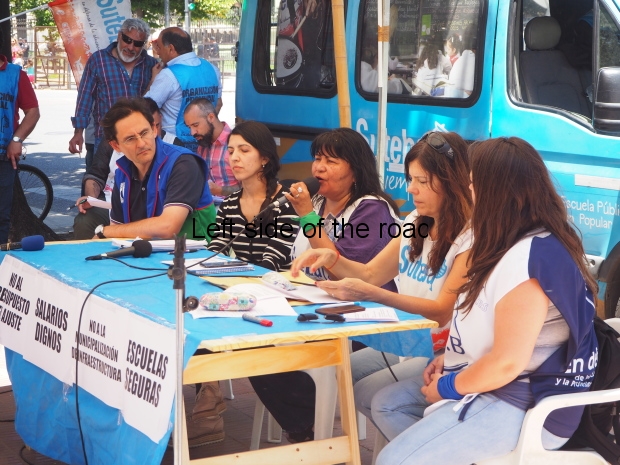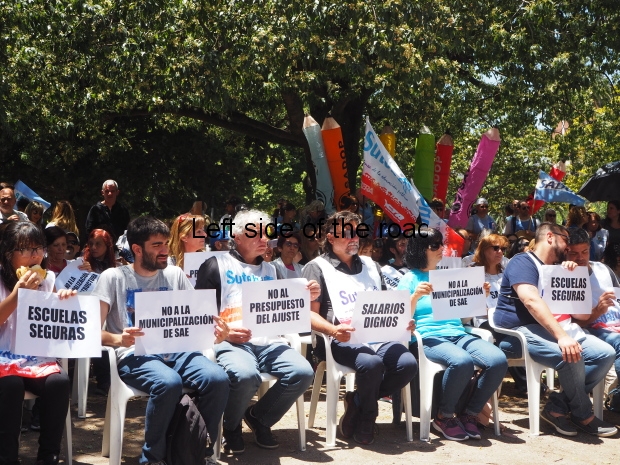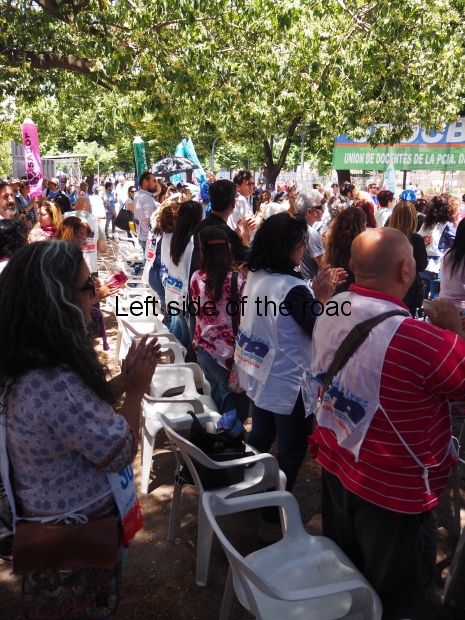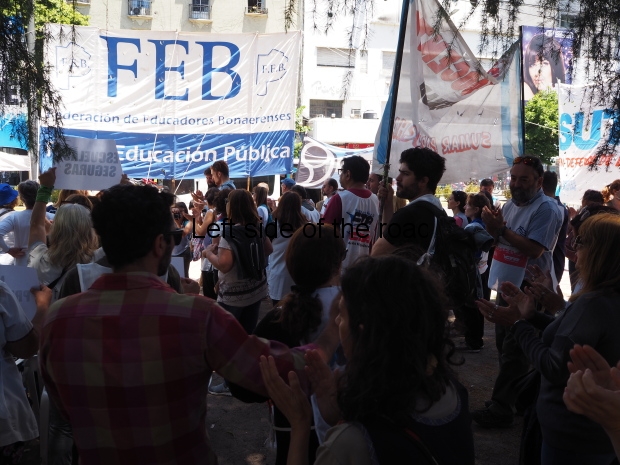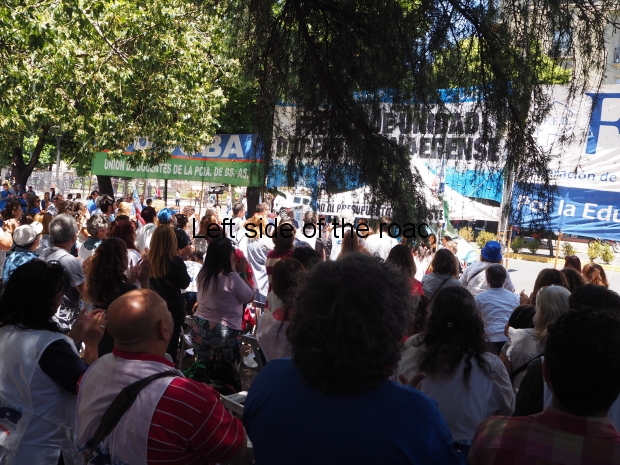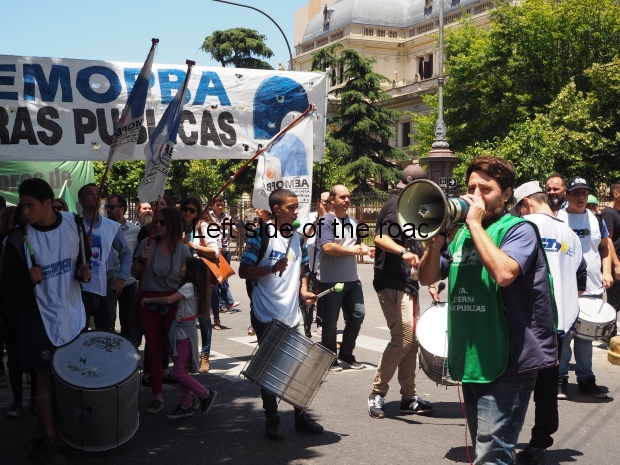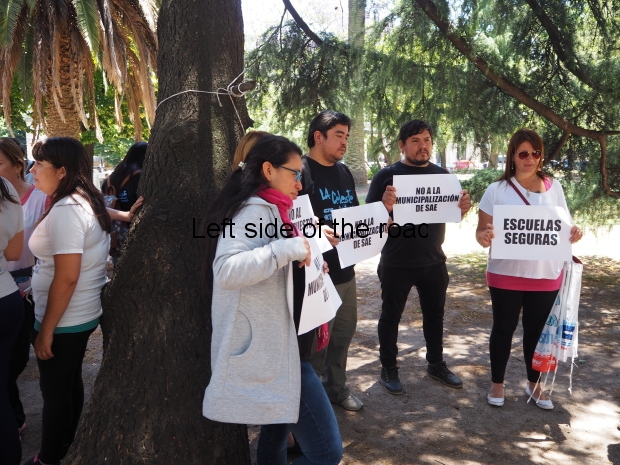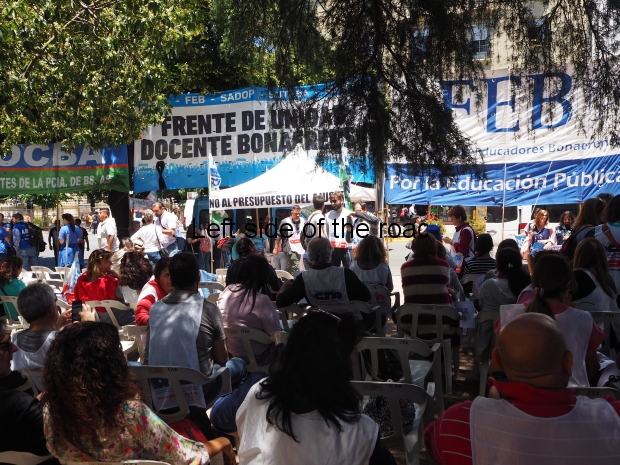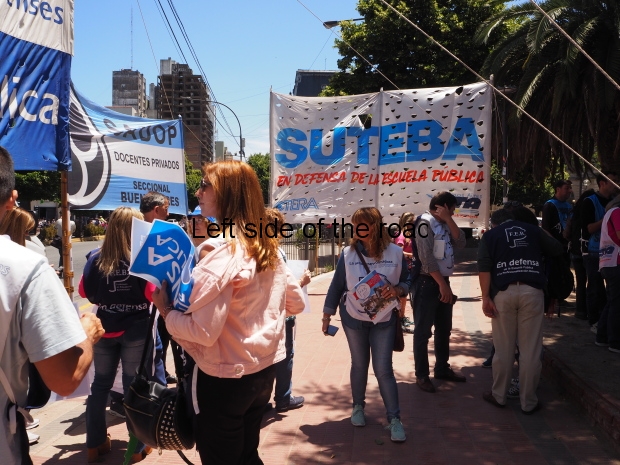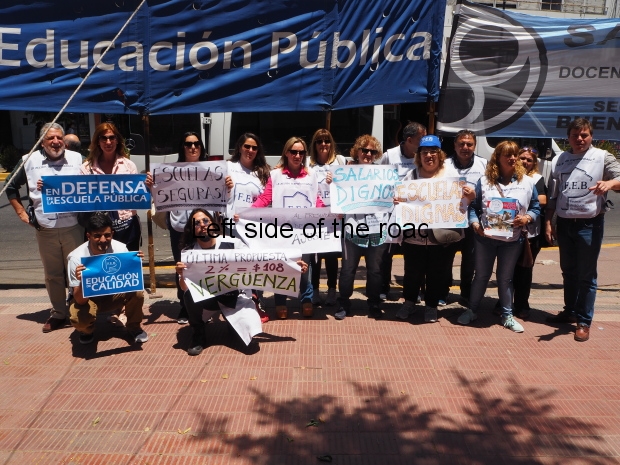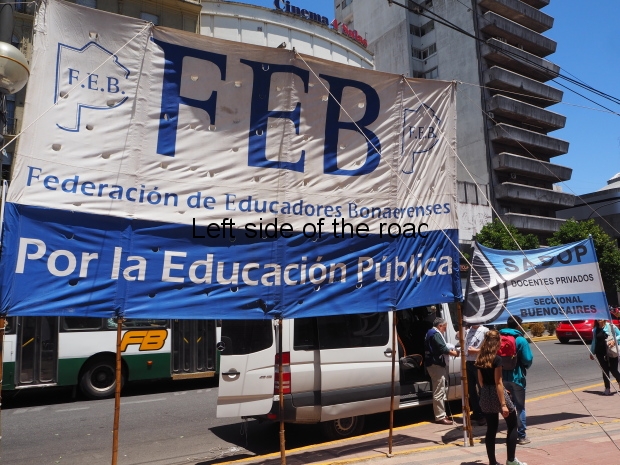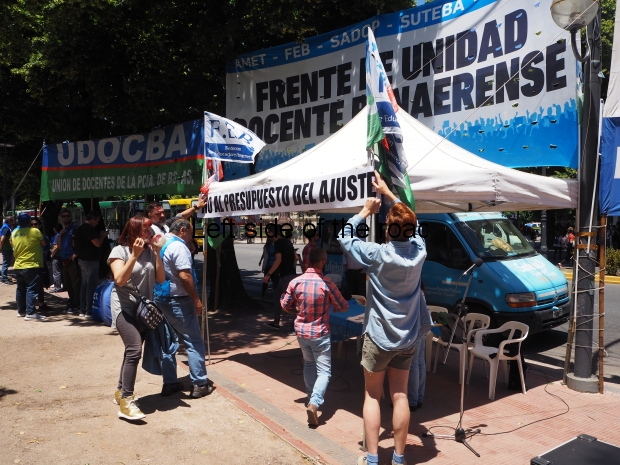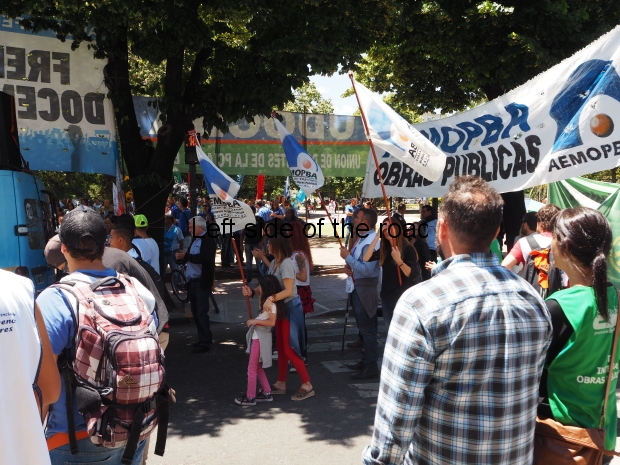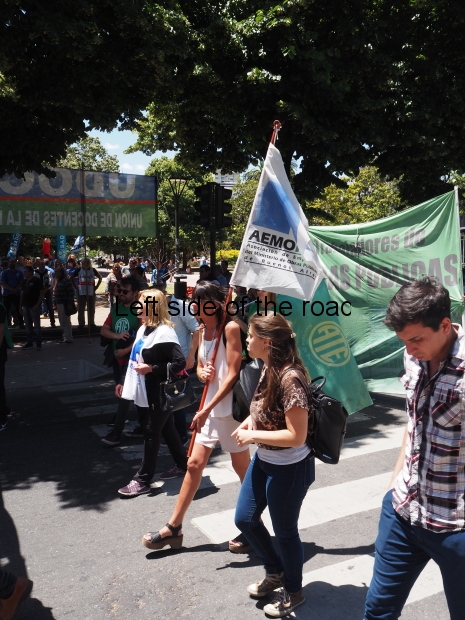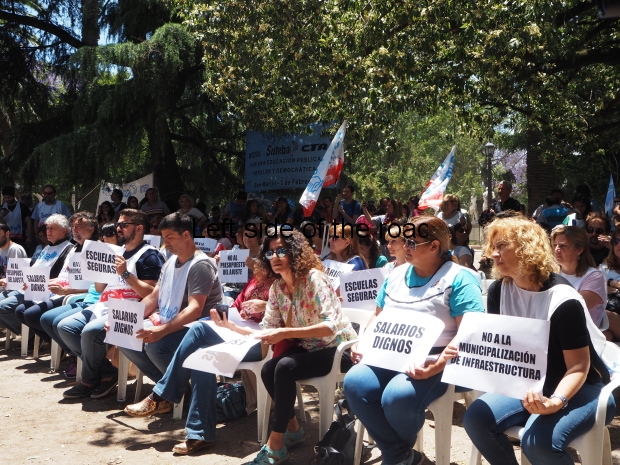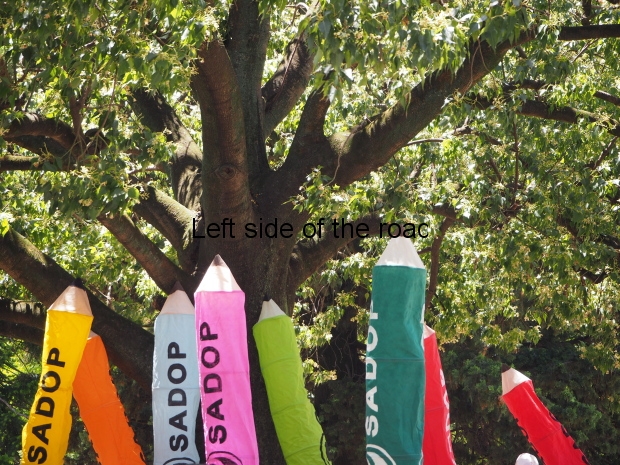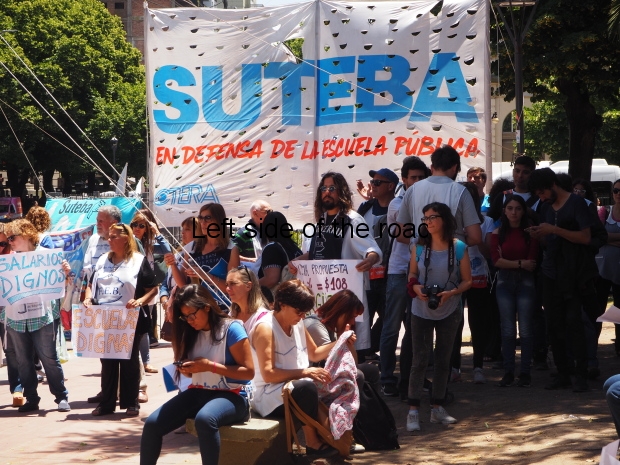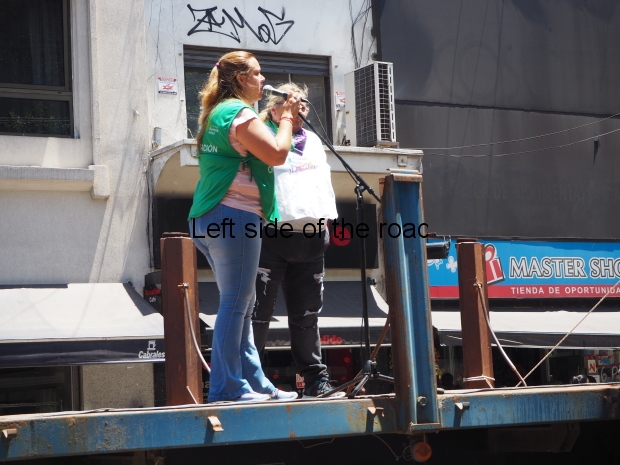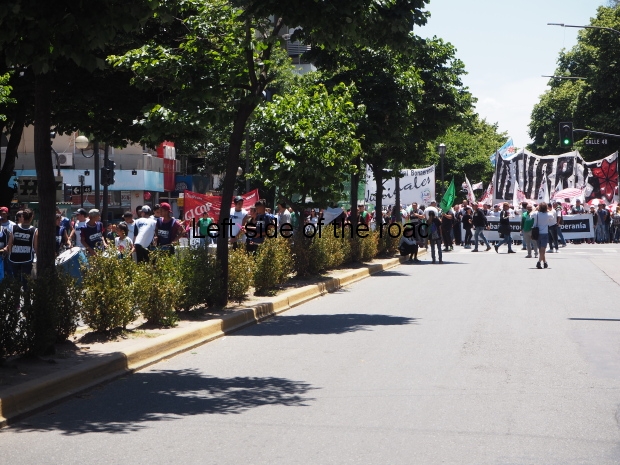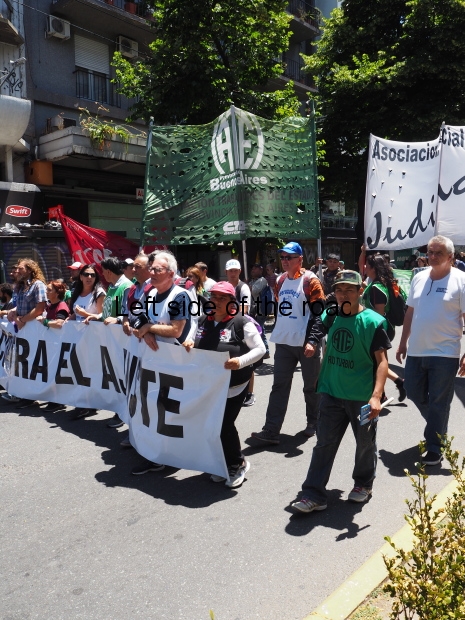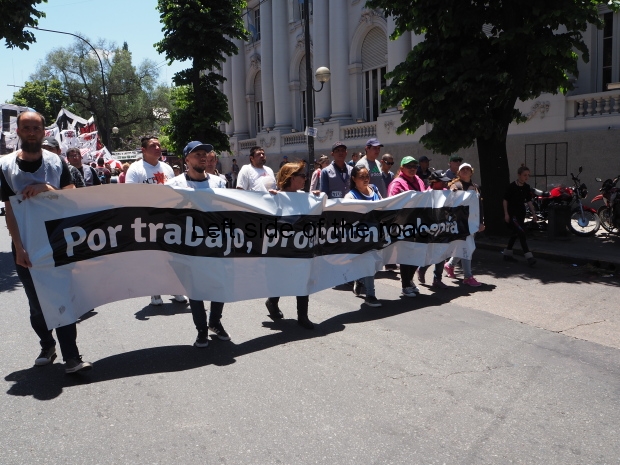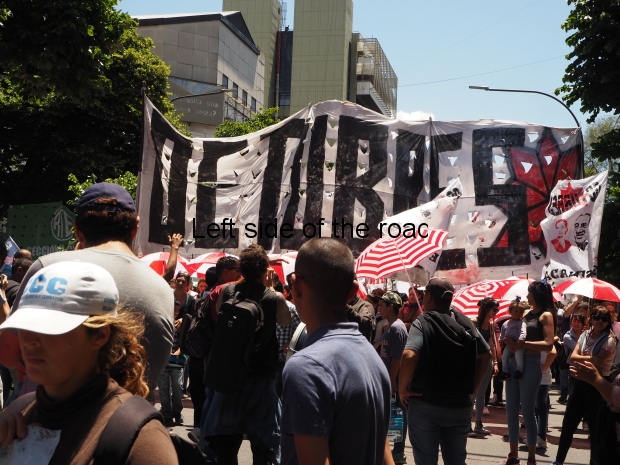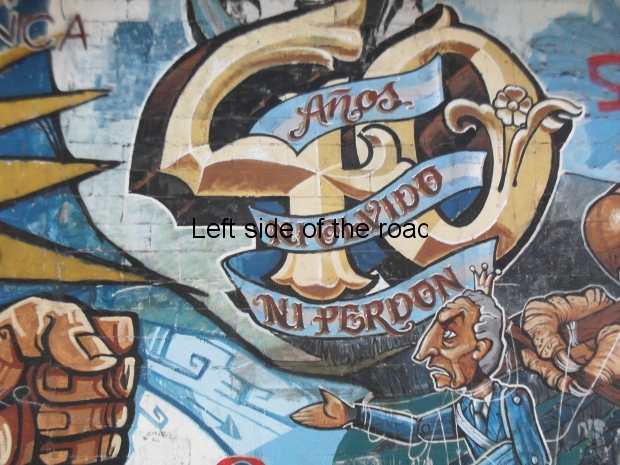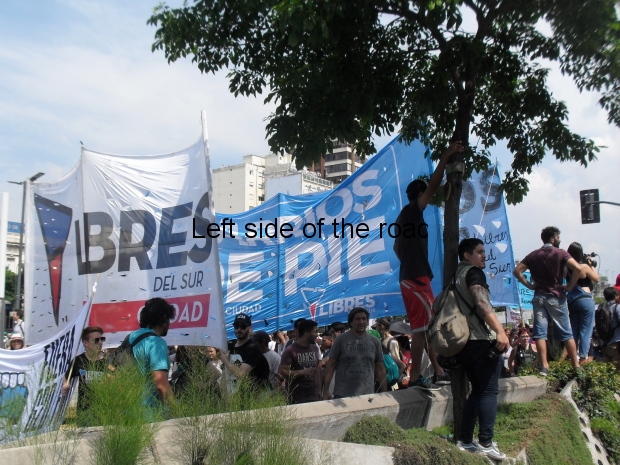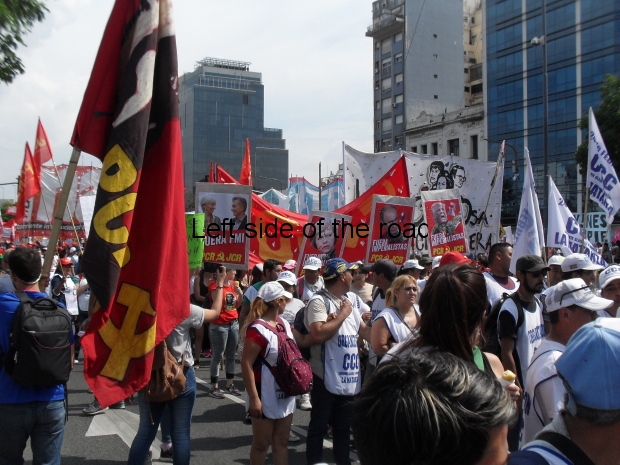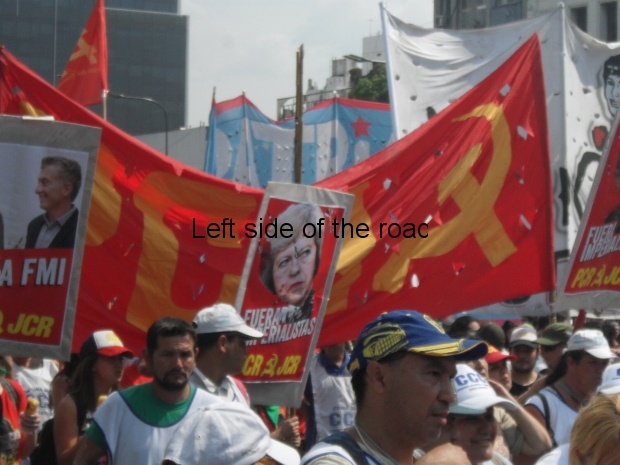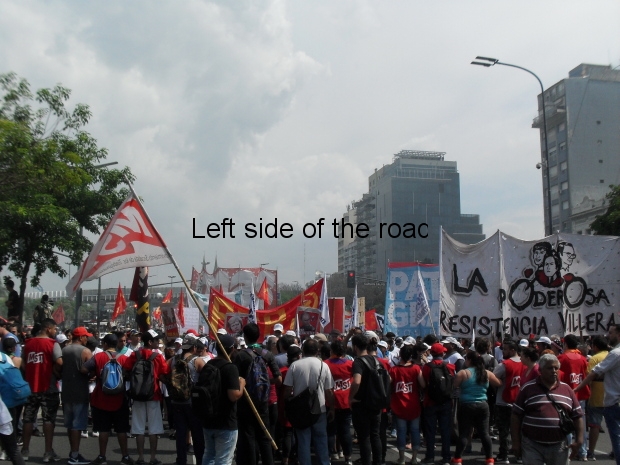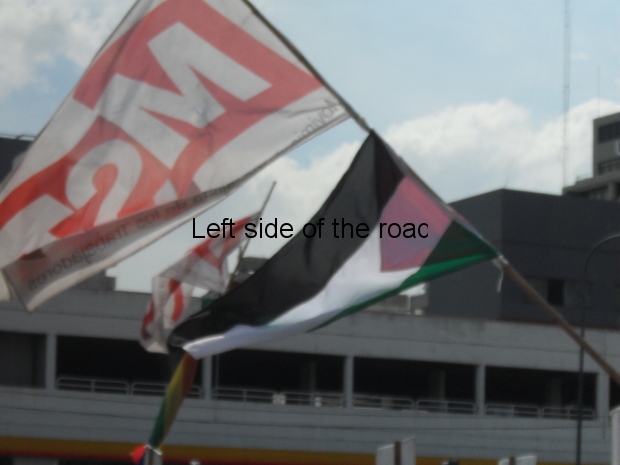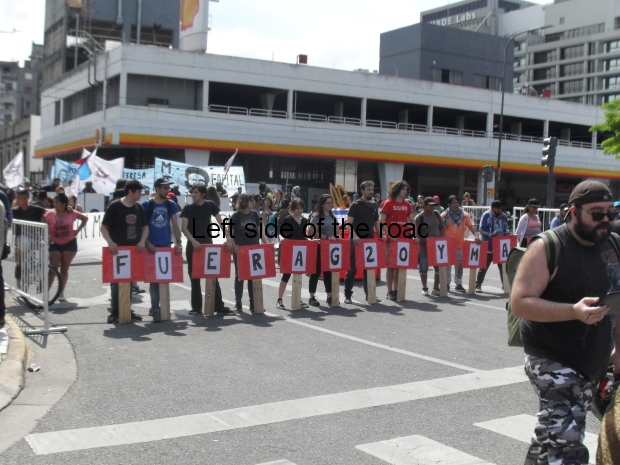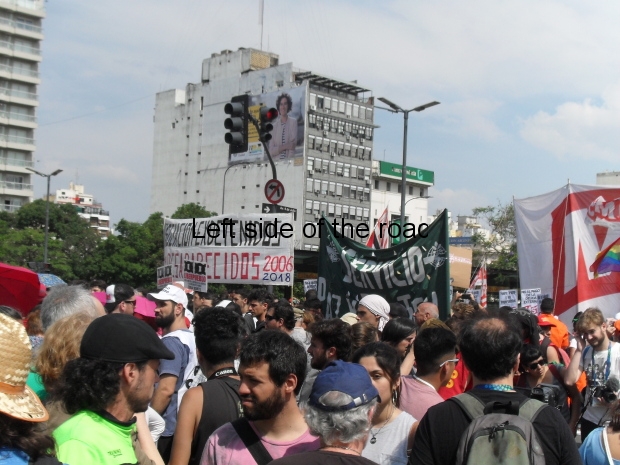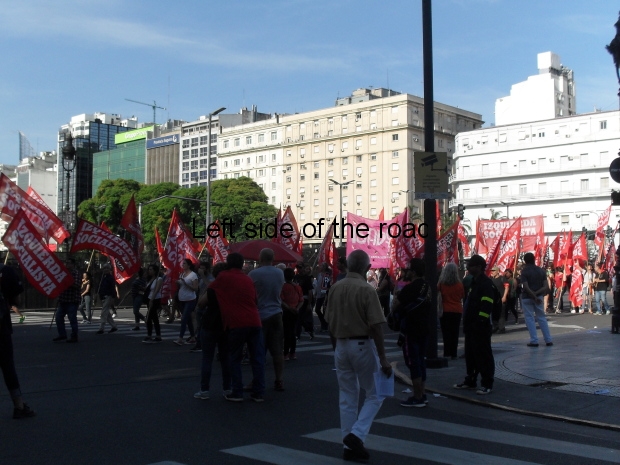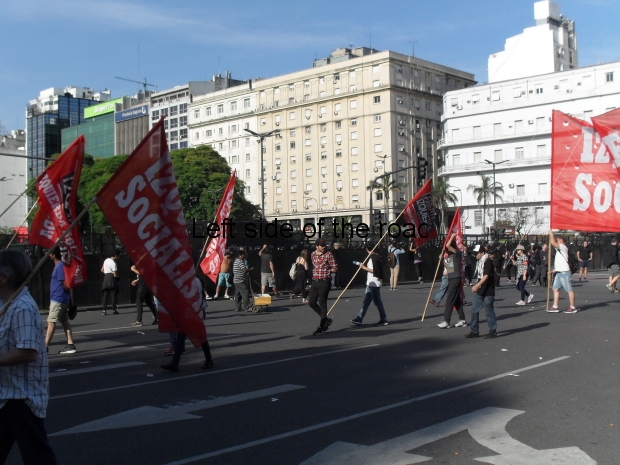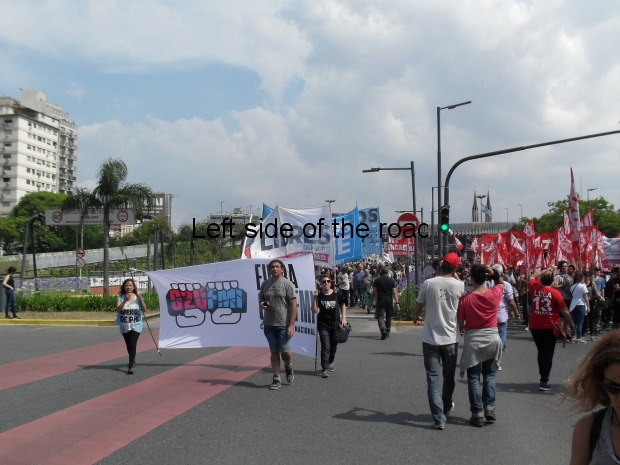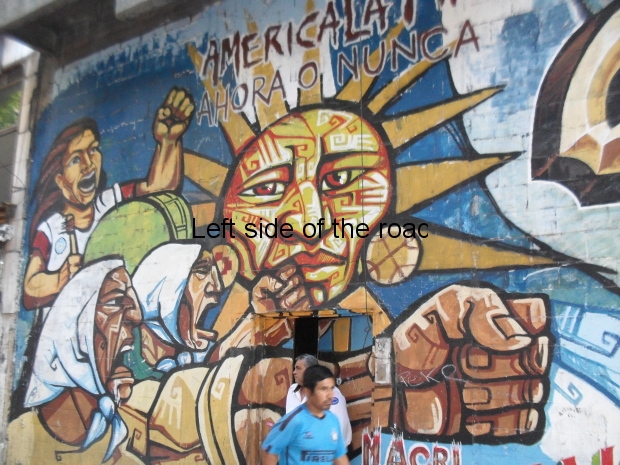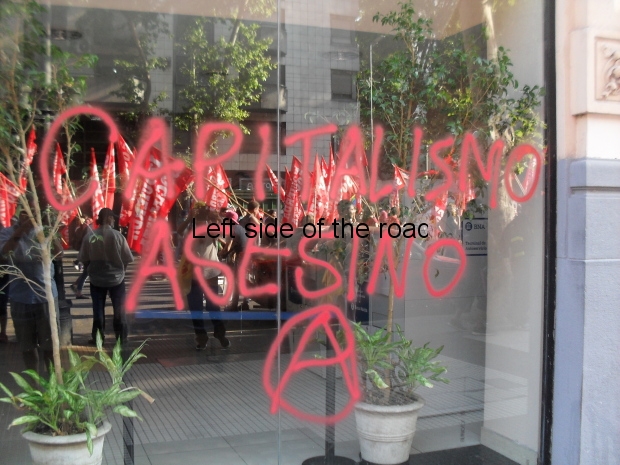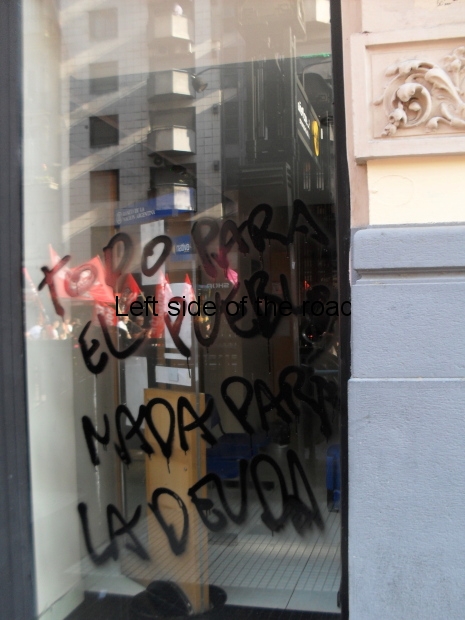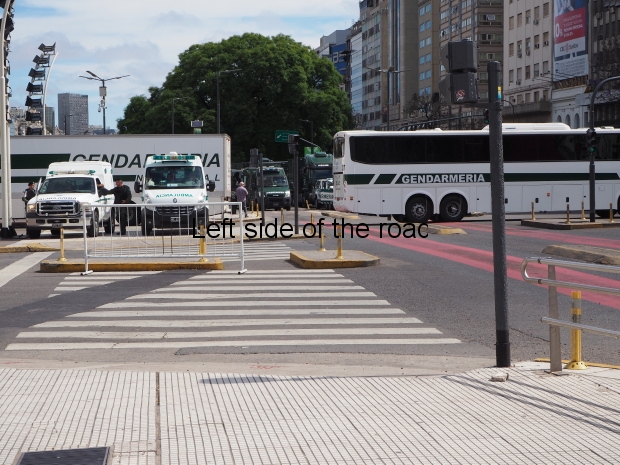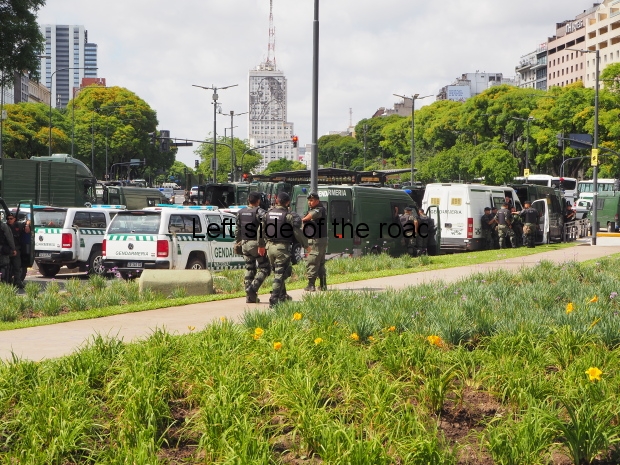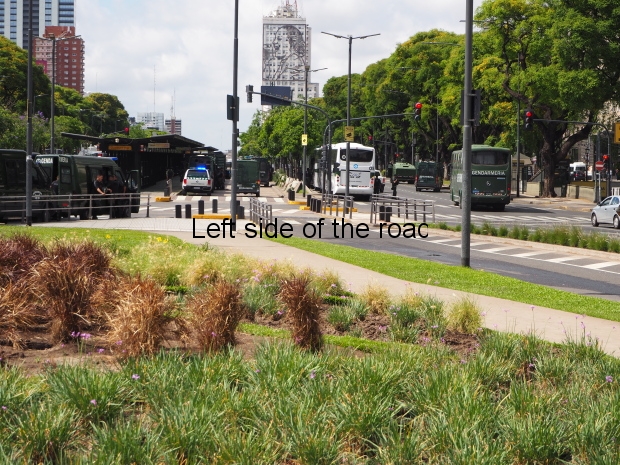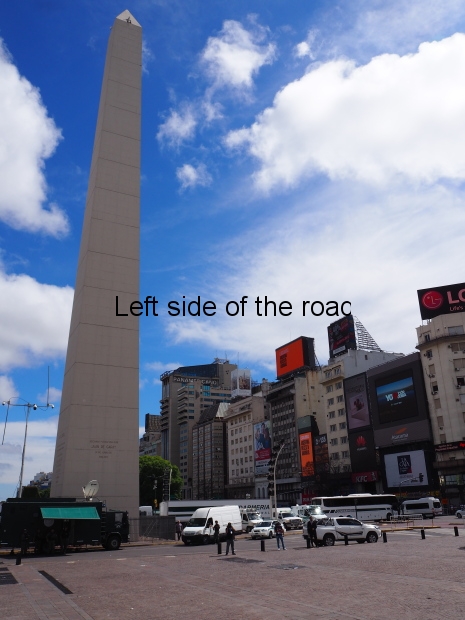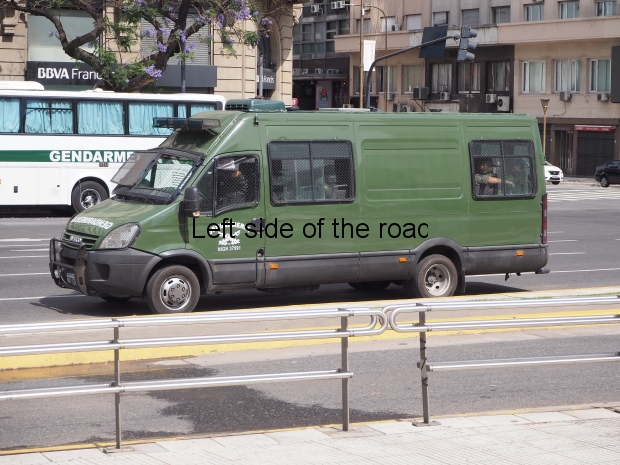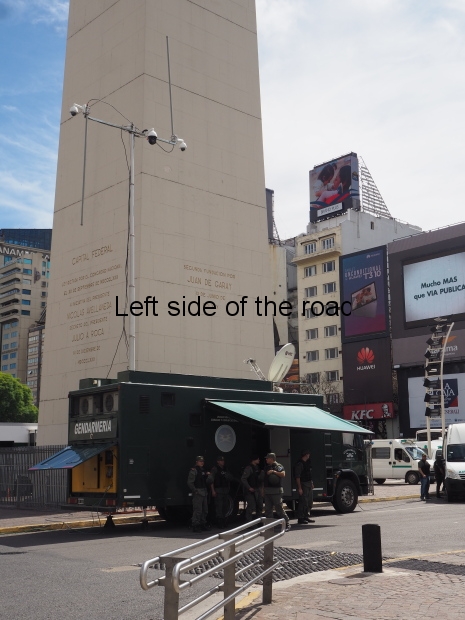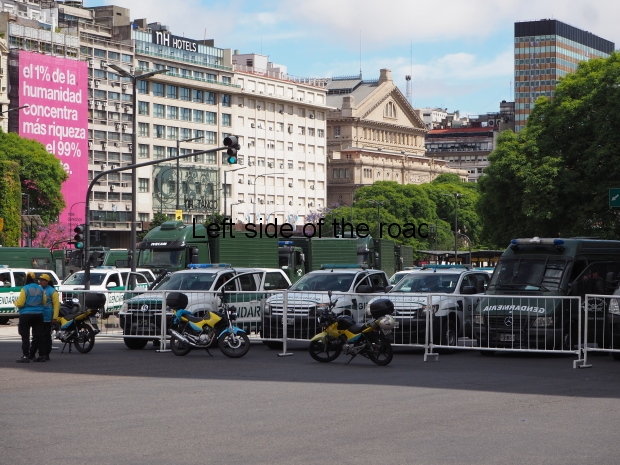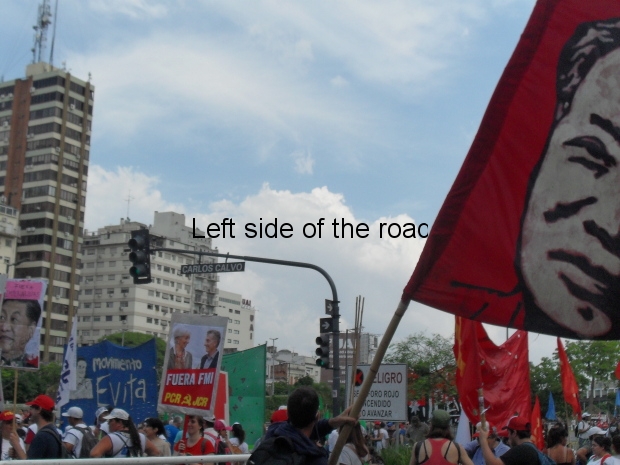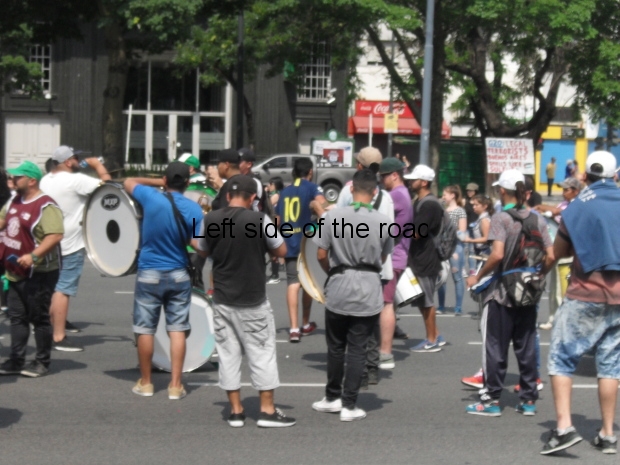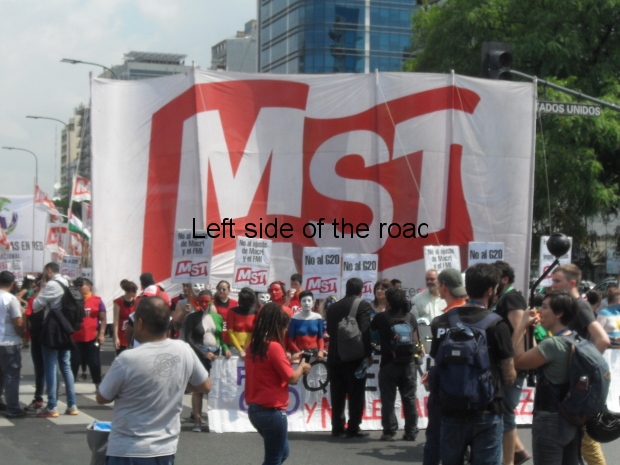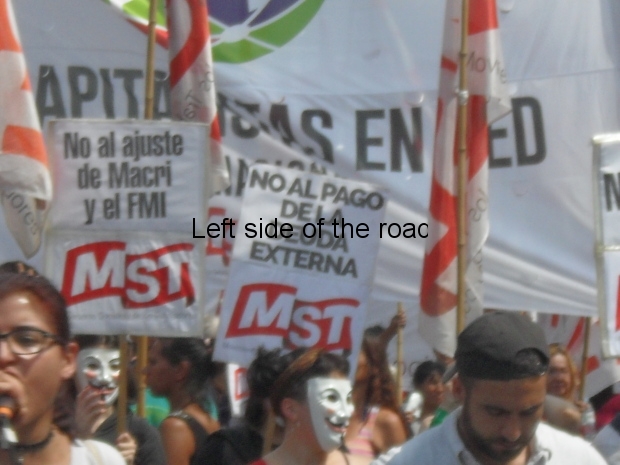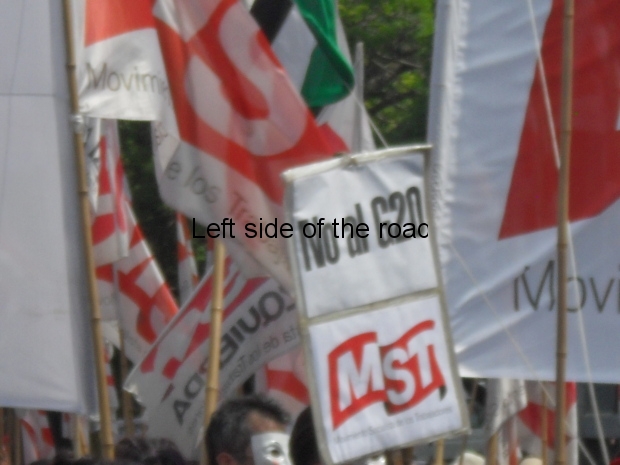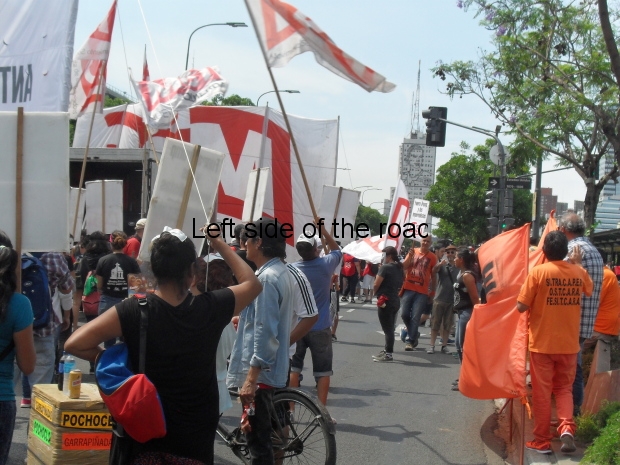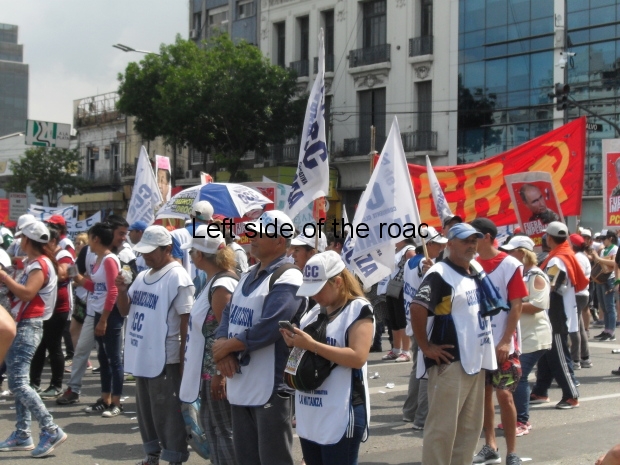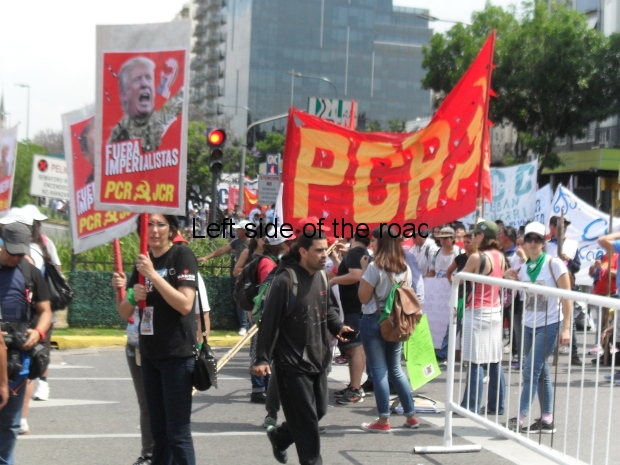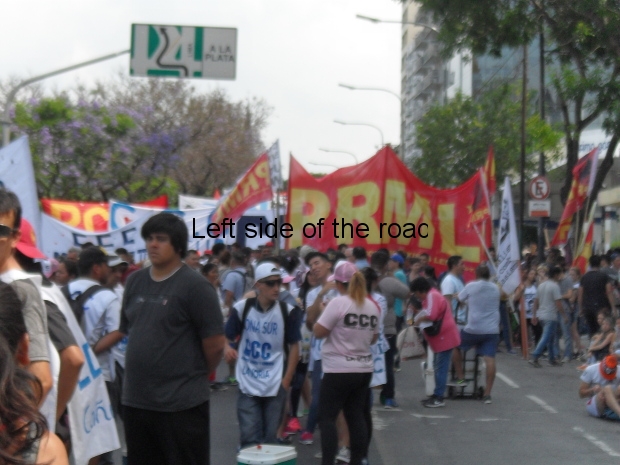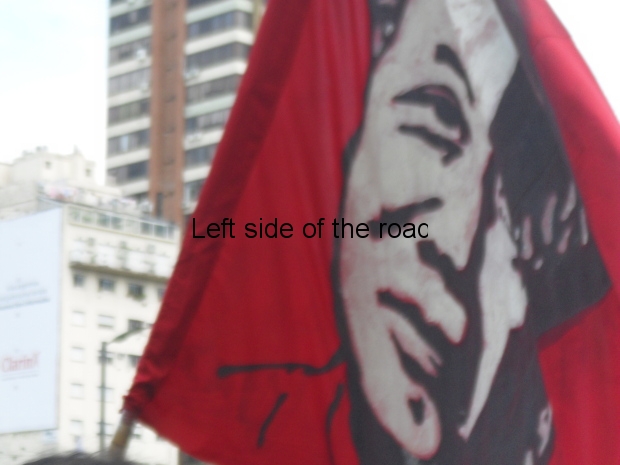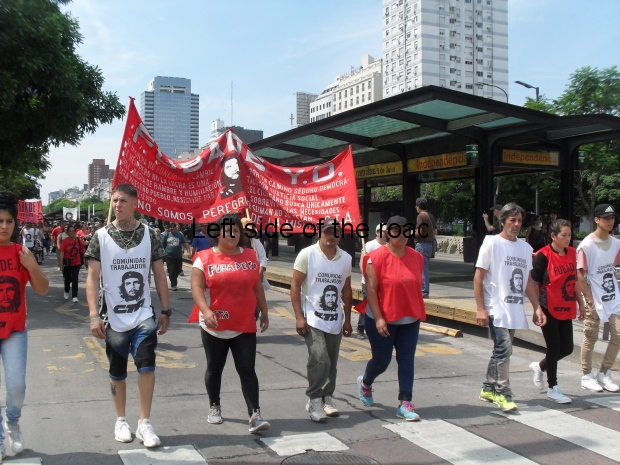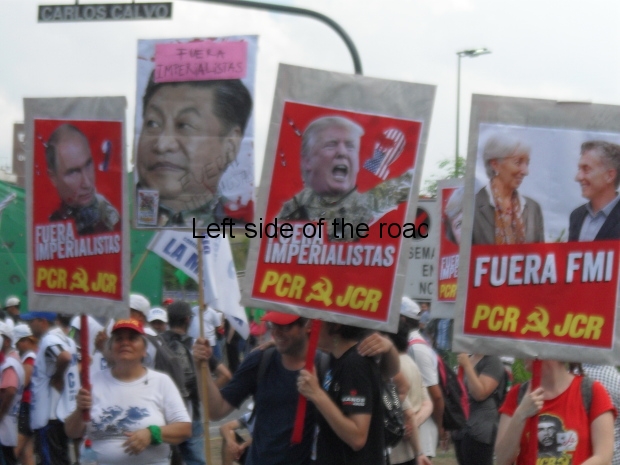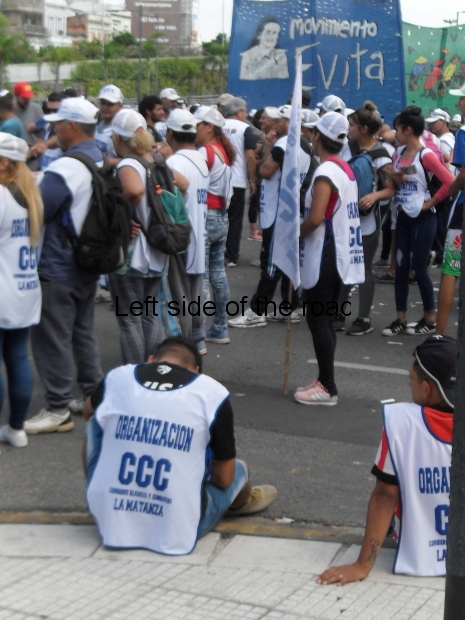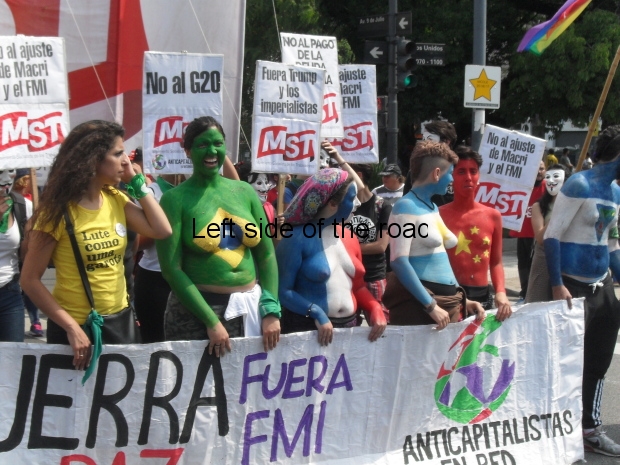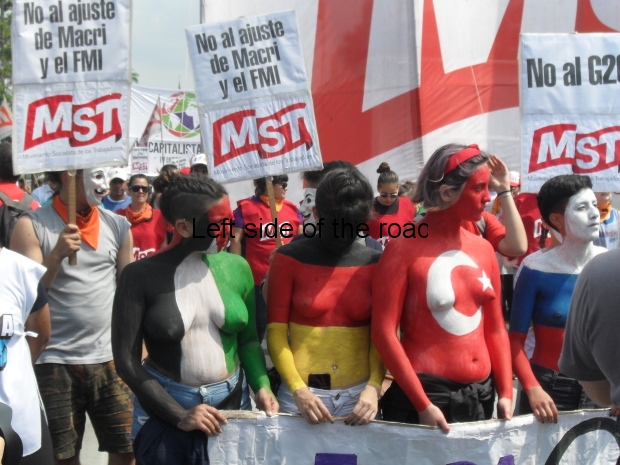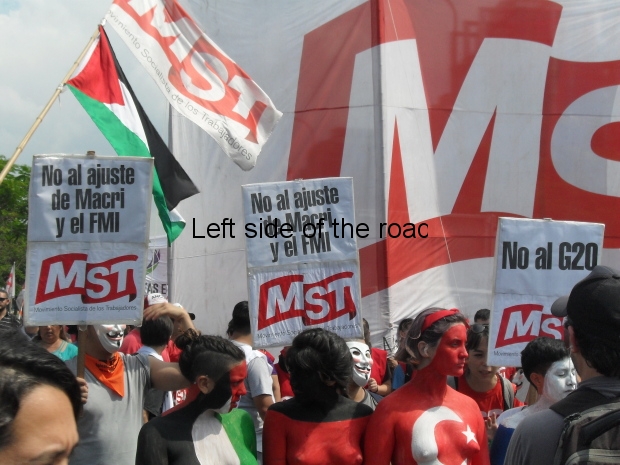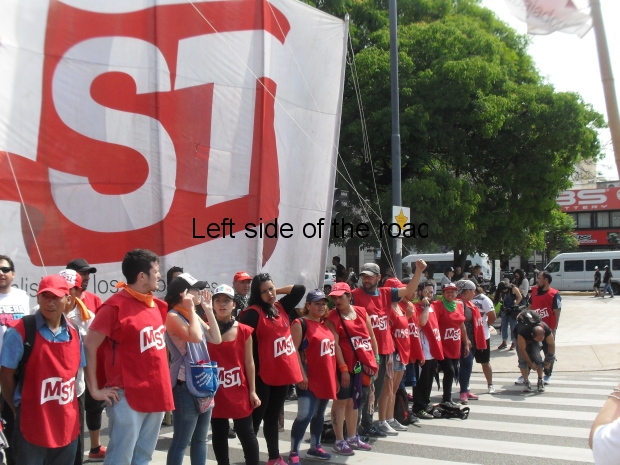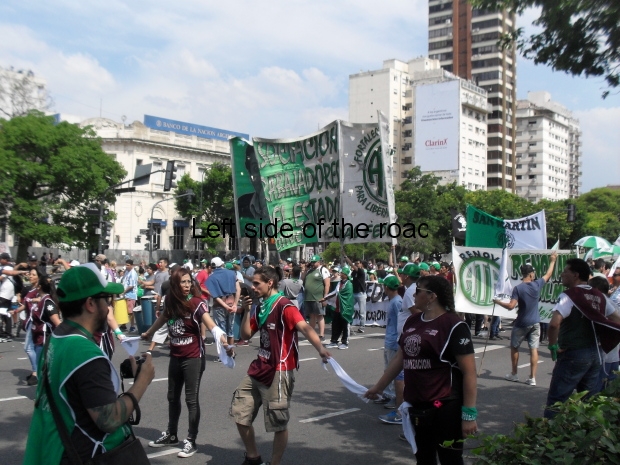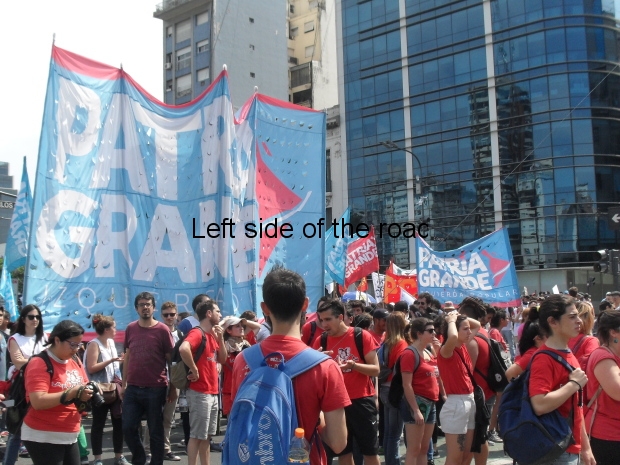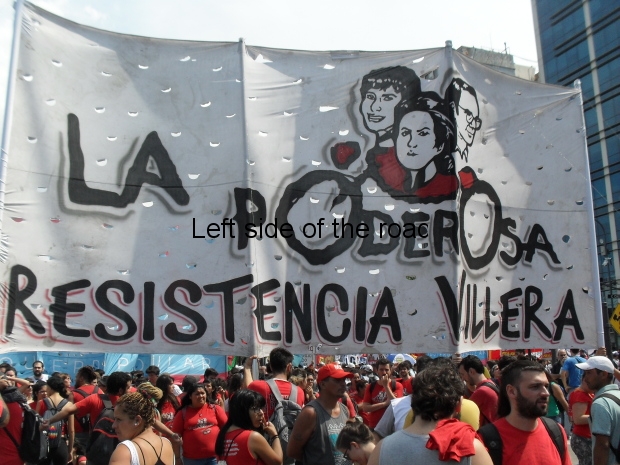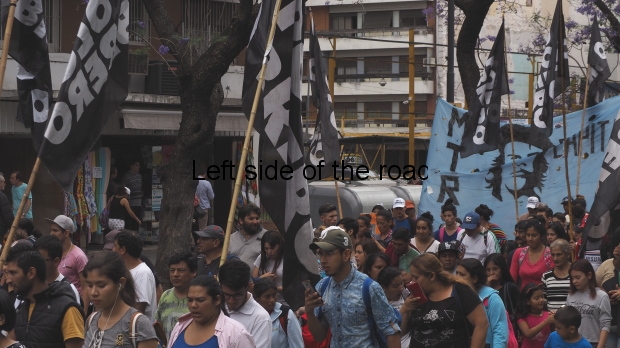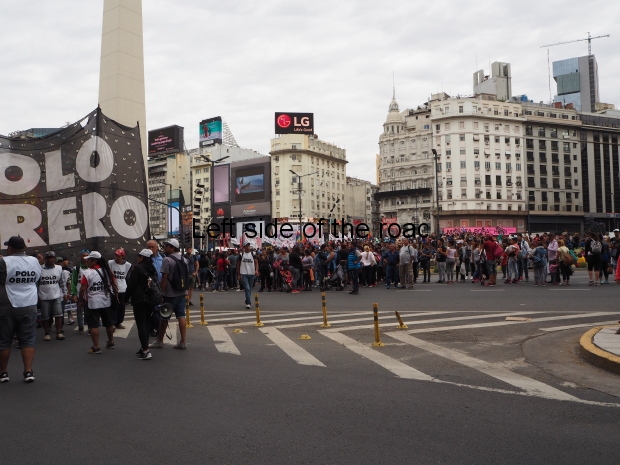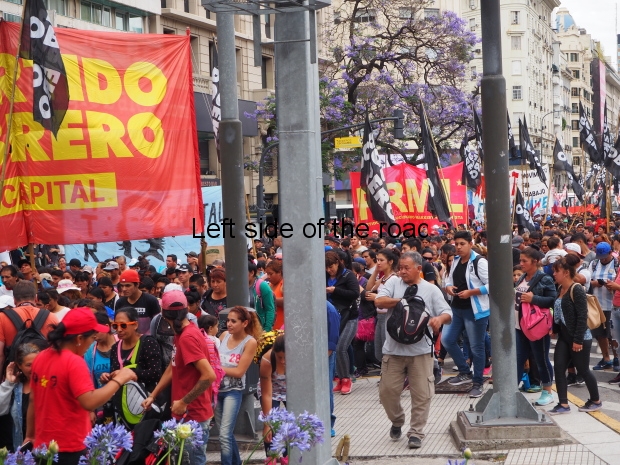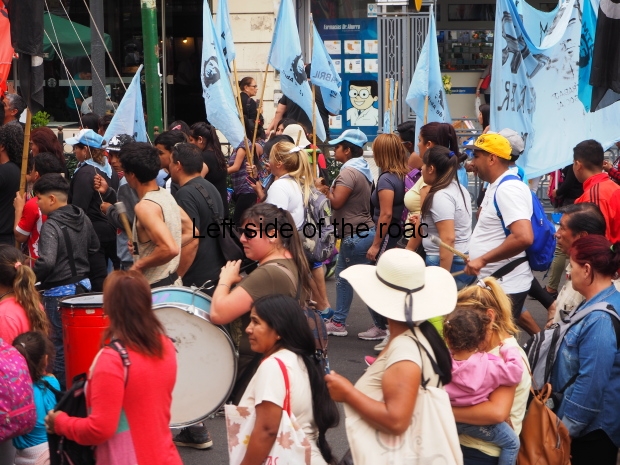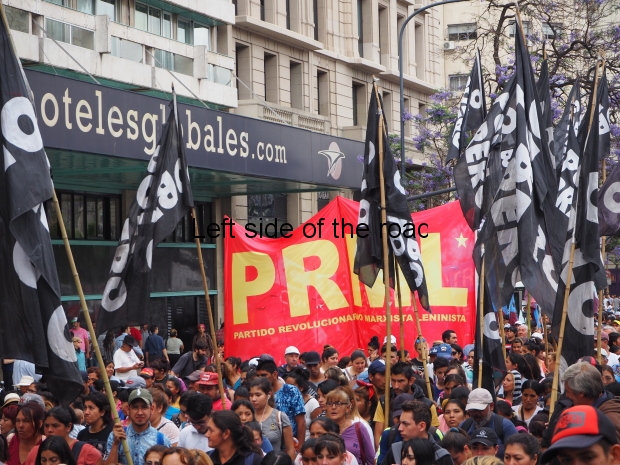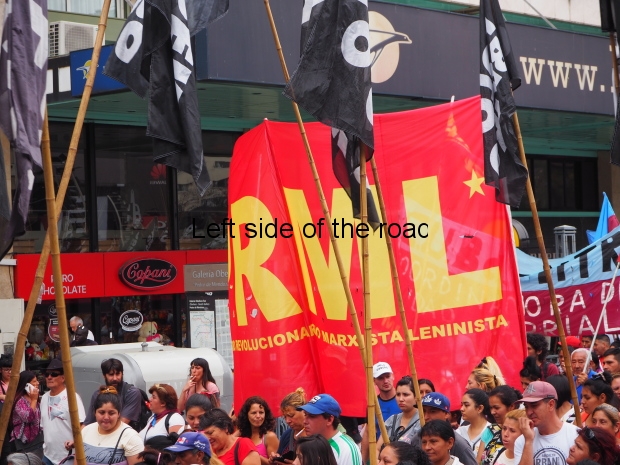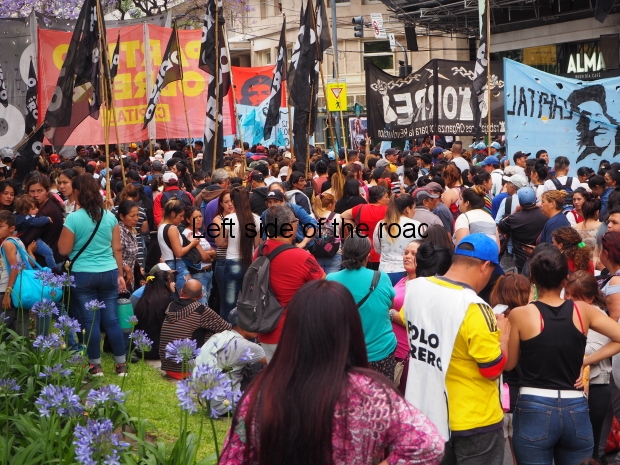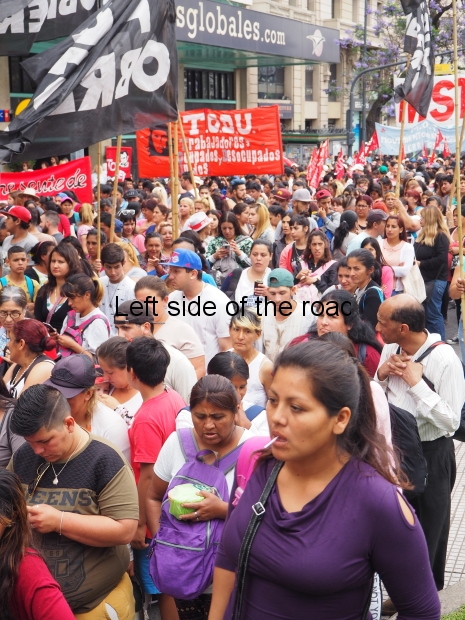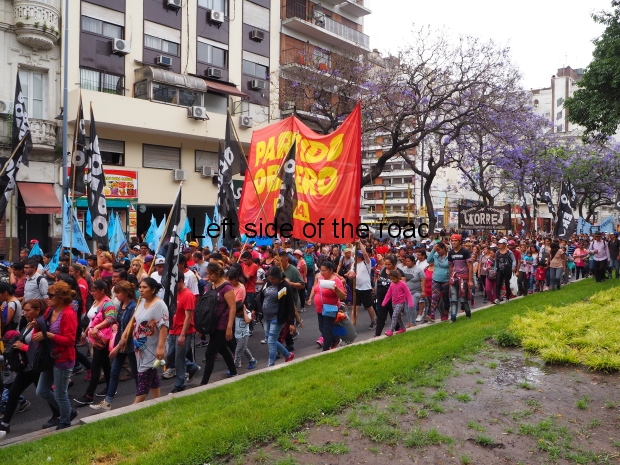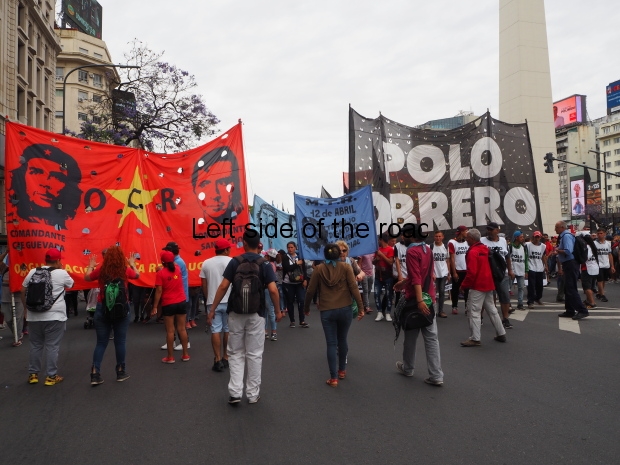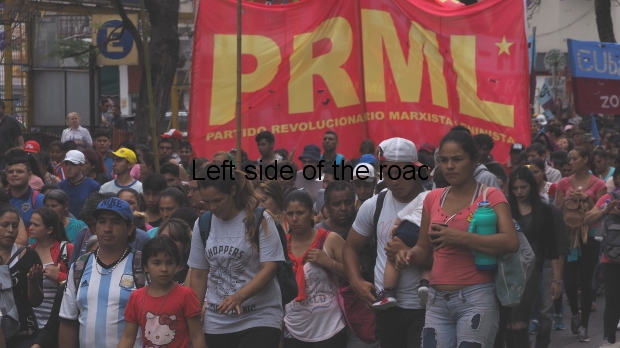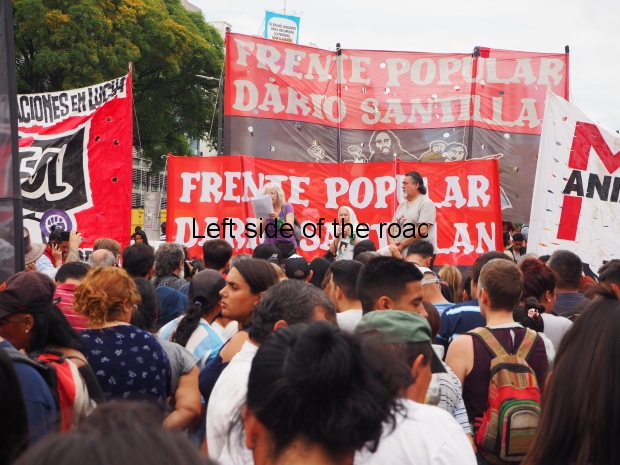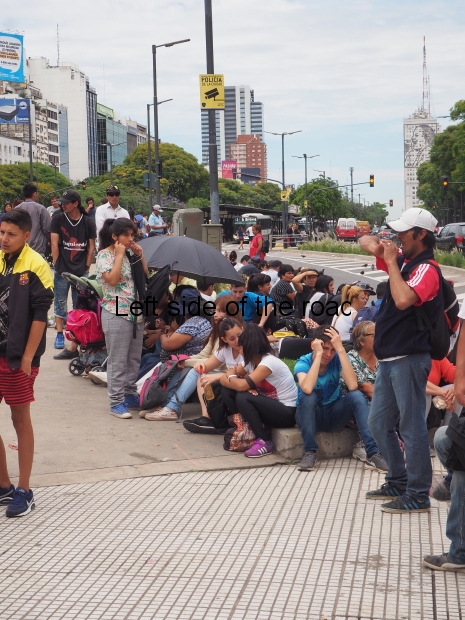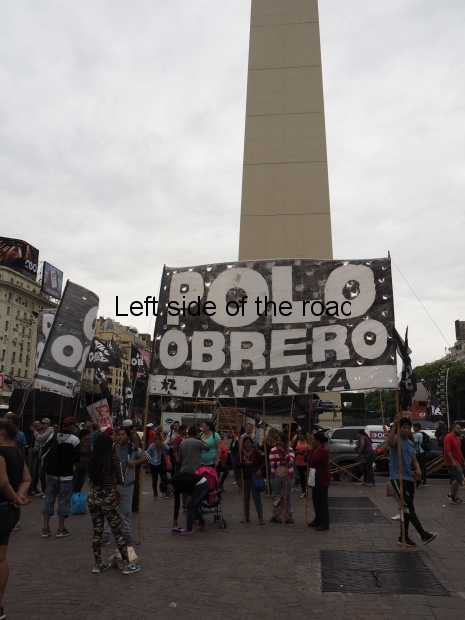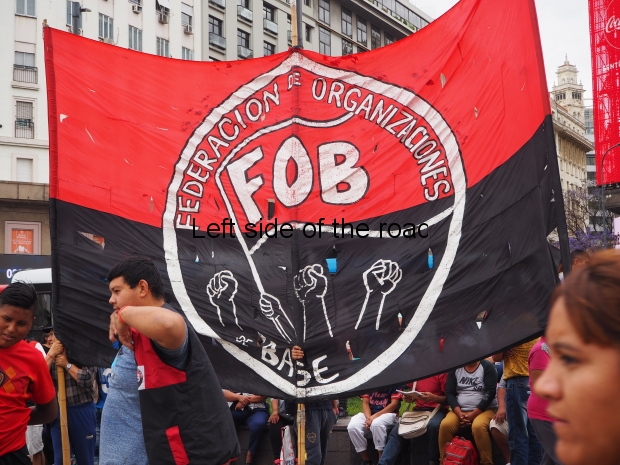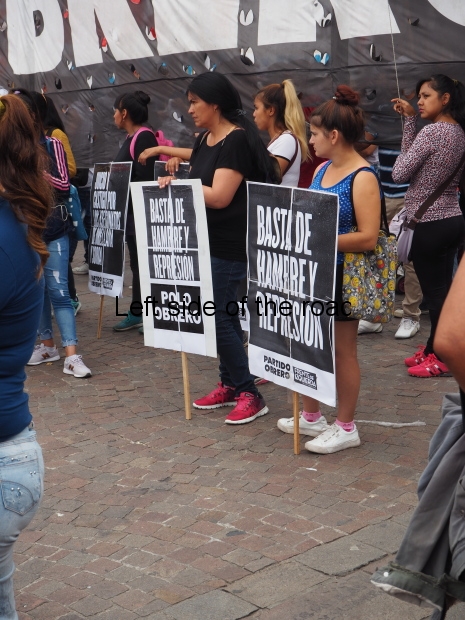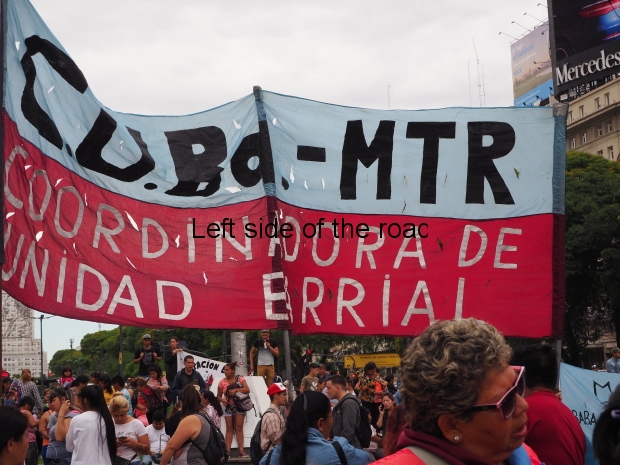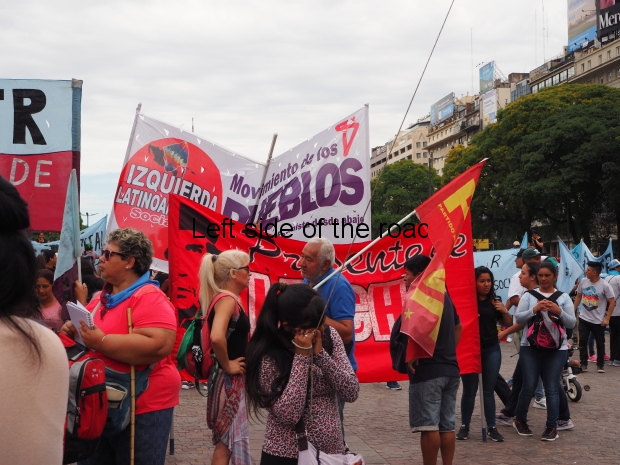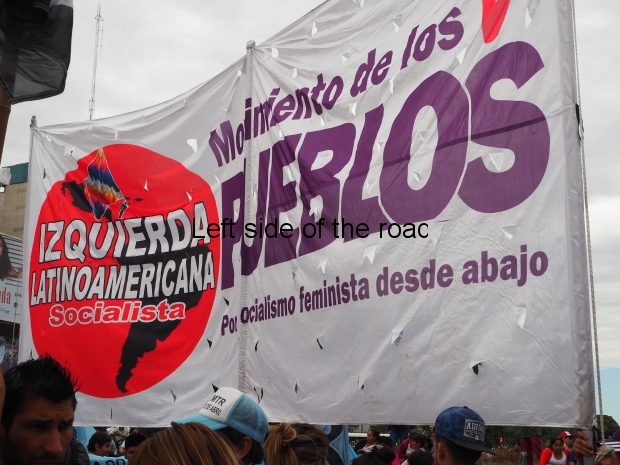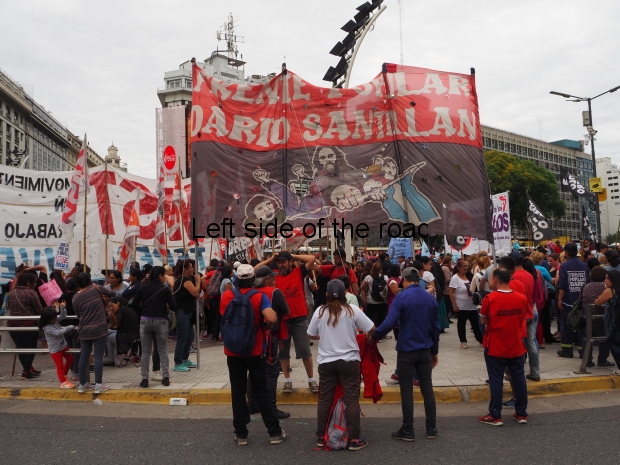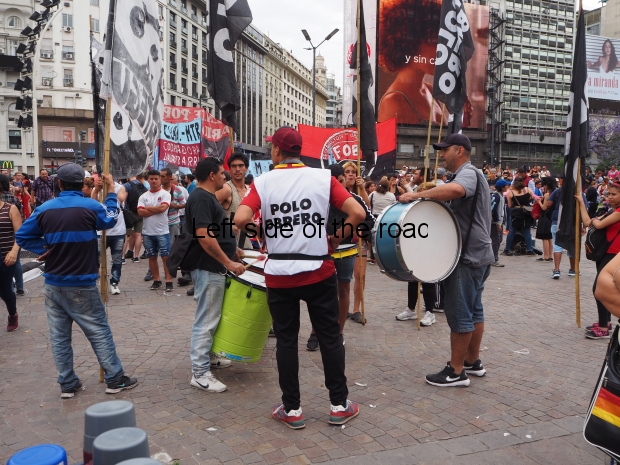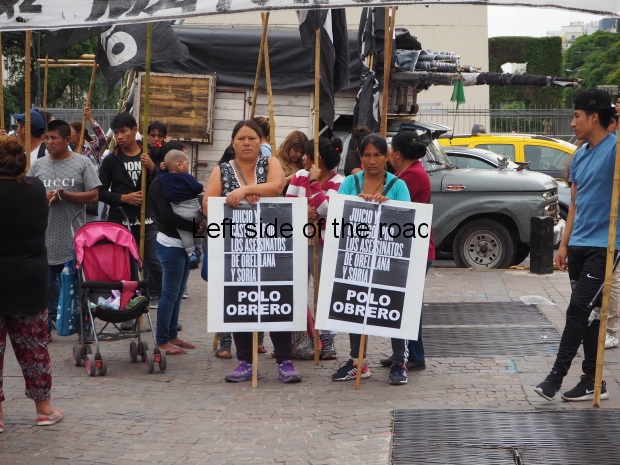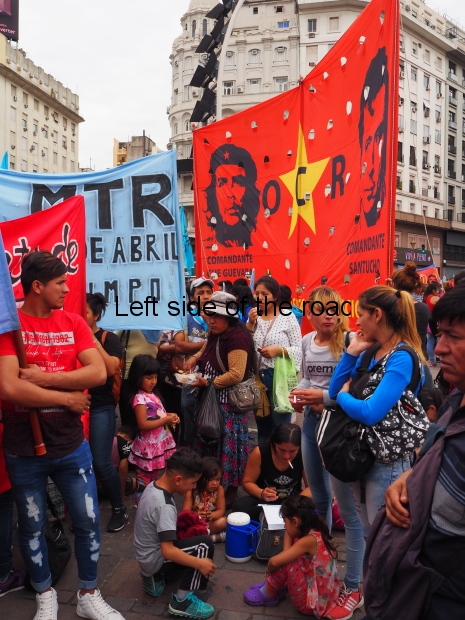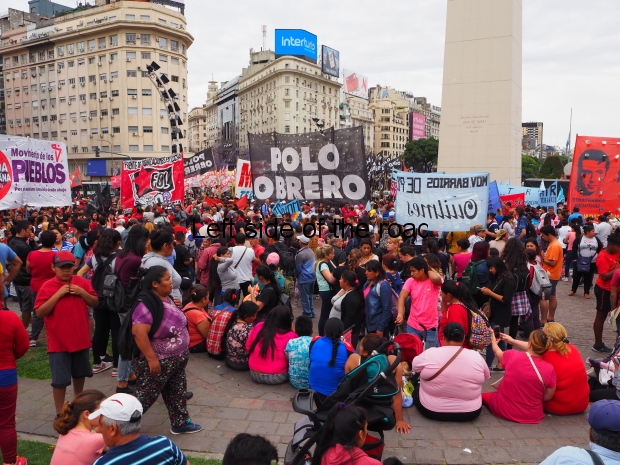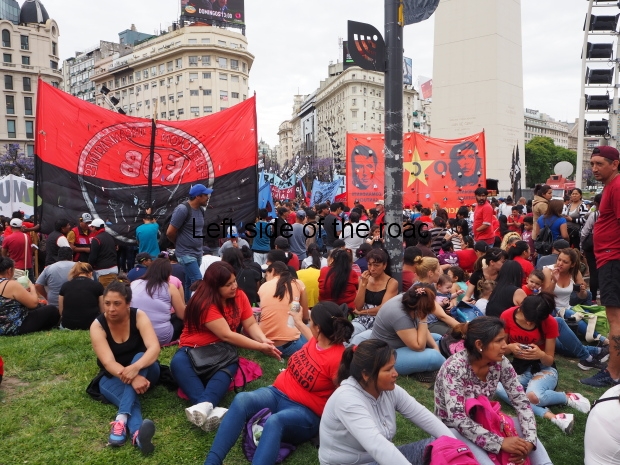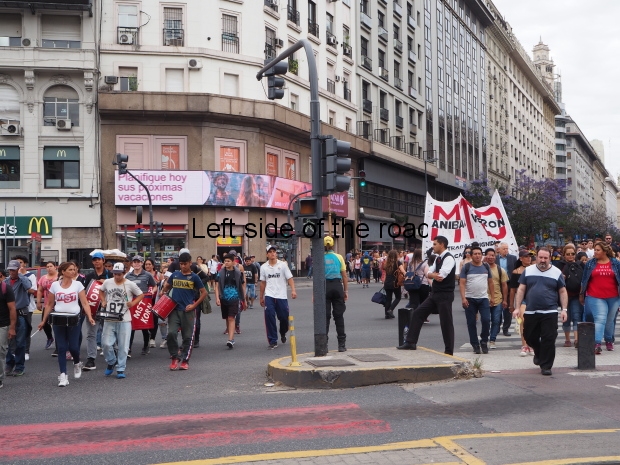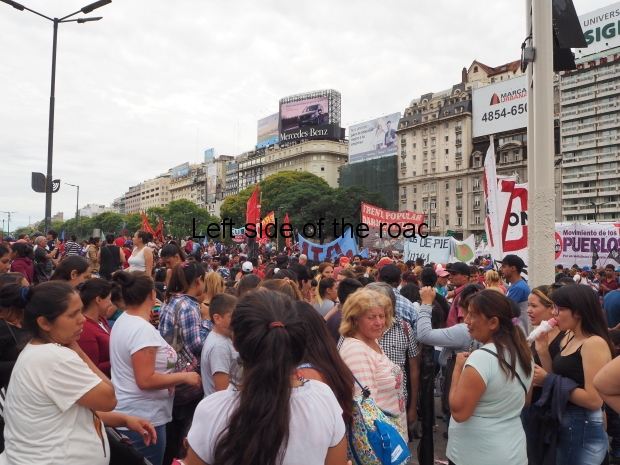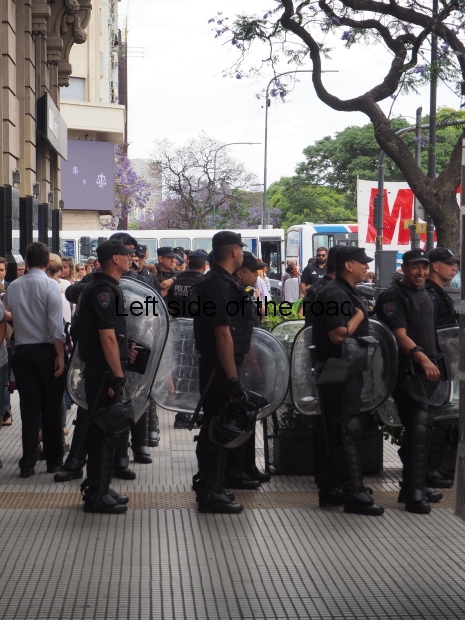
SUTEBA meeting, La Plata
Anti-cuts meeting and demonstration in La Plata
On Monday 3rd December I was asked if I would like to attend a meeting called by one the Buenos Aires Teachers Unions, SUTEBA (Sindicato Unificado de Trabajadores de la Educación de Buenos Aires), in the city of La Plata – about an hour’s drive from central Buenos Aires and the Legislative centre for the Buenos Aires Province. On that day the legislature was meeting to decide the budget for the coming year.
For anyone who has an interest in the attacks that social and public services are undergoing throughout the world under the auspices of the IMF (International Monetary Fund) and the World Bank they will not be surprised to read that the Trade Unionists were fighting to protect public education in general (it is still free to University level in Argentina) as well as the conditions of work for the teachers and the level of support provided by the state so that a future generation can have a decent start in life.
It will also come as no surprise that the so-called leaders of the province – behind their barricaded Congress Hall with the presence of hundreds of police – decided that the best way forward for the country was to cut the education budget – as well as other social welfare schemes.
As I’ve written so many times in various posts on this blog I just cannot understand why ordinary working people still have any faith in these people, of whatever political colour, who put themselves up for election and then do what they wanted to do in the first place, i.e., maintain their privileged position in society and let the rest go to hell.
However, SUBTE still believes in the electoral process and decided to have a meeting (what they call a press conference) in front of the very barricades in the Plaza de San Martin (known as the ‘Liberator’ in many South American countries) that were protecting the legislature from the anger of those they are supposed to represent.
A meeting is a meeting – even thought the sun was shining and people were sheltering from the sun – so many demonstrations I’ve been in Britain we would have been sheltering from the rain. Pictures in the gallery will give an impression of what was taking place.
Here I want to make a couple of points.
At the very start of the meeting there was the call for a minute’s applause as we were almost exactly four months since the death (on August 2nd 2018) of a deputy director and an assistant in a school in the city of Moreno, about 36 km to the west of Buenos Aires. A faulty gas appliance, which the authorities refused to repair, blew up as they were preparing for the start of the school day. A few minutes later the room would have been full of children.

Applause for Sandra and Ruben
Immediately after the event there were demonstrations in the city by teachers, parents and students protesting that such unnecessary accidents are a direct result of government cuts in education. On the day that the local government was planning further cuts in the education budget it was important that the needless deaths of these two union members was remembered and commemorated.
But what these teachers did to celebrate and remember these fighters for workers’ interests was to have a minute’s applause – not a minute’s silence – which in any Argentinian city is an almost impossibility anyway. I have never come across this before, in any Latin American country, and don’t know if it has become the norm. But isn’t that something more positive than just standing there counting the seconds in a minute’s silence and doesn’t it actually require some level of participation?
What I also thought was strange was the fact that although the teachers had organised (and got permission) for their meeting so close to the legislature they were not really interested if other trade unions (also facing the same sort of cuts in the budget) would be taking action as well. As soon as we arrived in the city it was obvious that something else was going on as a demonstration was forming up in the Plaza Italia. But my companion didn’t know anything of this beforehand, even though she is a full time union official.
I can understand the power of spontaneity when it comes to demonstrations but I also believe in the movement working towards a common goal. In Britain, and in the rest of Europe from my knowledge, the aim is to get as many people on the streets at the same time over similar, if not the same, issues. But that doesn’t seem to be the case in Argentina.
There was a common issue which brought trade unions, neighbourhood organisations and political parties together and that was the G-20 of the week before. If it can be done (with all, the possible conflicts which I mentioned when writing about the G-20 demo) for something exceptional why isn’t it done all the time. The State is always organised and knows exactly what it is doing. Why isn’t the Argentinian working class thinking in the same way? Or am I just missing something here?
Anyway.
As the teachers meeting was coming to an end this demonstration, that had taken over the whole width of the road (it being blocked to vehicular traffic as the extra ‘protection’ for the building had made it impossible for any more than pedestrian traffic to use the street) came along.
And with such vocal force. In front was a large, flat back truck on which was installed a sound system that would have made a 60’s concert goer weep. Huge speakers amplified the words of a couple of women who were taking terms calling out the legislature for what it was. Without a break. No time for empty space. Denunciation followed denunciation. Challenge followed challenge. Insult followed insult.

The March arrives
And behind them the road was filled with fluttering banners – representing people’s political or neighbourhood allegiance rather than that of their work – which might say a lot about the difference between political activity in Argentina and a place like Britain – at least in the past.
Here I became slightly bemused. Although the amplification of the teachers meeting was more than adequate for the task in hand (there being no traffic against which it had to compete) now, getting closer and closer were these loudspeakers, bigger than me, blasting out an anti-government message and behind them groups of drummers banging out a message of ‘we are here’.
But SUTEBA had a programme and they were going to stick to it – which included a musical performance by a Chilean Andean music group – which just got drowned out by the ambient noise of this mass of people coming into the square. But this was just treated as normal by everyone but me.
So I have to accept that I was the odd one out.
The square filled up with people and the truck was parked right in front of the Legislative Building, right next to the reinforced ‘vallas’. Behind them stood ranks of riot police, taking it in turns standing out in the sun or in the shade.

A fireman’s work in Argentina
Earlier I had seen firemen running out hoses, I assume in readiness for an attack on the building on the part of the demonstrators. In Argentina the fire brigade is still part of the police. It was in Britain but I don’t realise that until I went to Liverpool and heard the term ‘fire bobbies’, meaning fire fighters. Although they still follow a very much military structure there has been a significant change in attitude over the years. Pictures from the ‘Bloody Sunday’ events in Liverpool in August 1912, during a transport strike, show the firemen of the time working with the police in ‘riot control’. This is noted in the difference in their helmets.
However, in Argentina, and in many parts of the world, there’s still a close link between fire fighting and the police and that means it’s just in a day’s work for firemen in La Plata to be running out the hoses to be used against the protestors. I assume it is also the same people who would man (and women) the water cannons on the streets.
I would like to think that the fire fighters in Britain have matured enough to become true members of the working class to refuse to carry out such tasks if called upon to do so in Britain. That would have to be taken on by the military – the scabs (strike breakers) in past fire fighters disputes. Perhaps this is one reason why we’ve never seen water cannons used against British protesters.
But, as usual, I digress.
But that Monday in La Plata the State had obviously decided that it didn’t need the bad publicity. Just as it didn’t want bad publicity at the time of the G-20 lock-down – which anyway made any confrontation extremely difficult – it was prepared to just look on, some from the roof of the Congress building.
So nothing ‘happened’ that day in La Plata.

Speeches are made denouncing budget cuts
The people complained. Speeches were made and drums were beaten in response.
The budget was cut – for all social services. As expected.
In the Clarin newspaper the following day there was no mention at all about the demonstrations. Reporters and TV crews were there to record what happened inside the legislative building but seemed blind to what was going on outside. Such is the ‘free press’ under a capitalist system.
Marches will continue to happen. Governments might or might not change. The poor will get poorer and the rich will get richer.
Everything changes but nothing changes.

